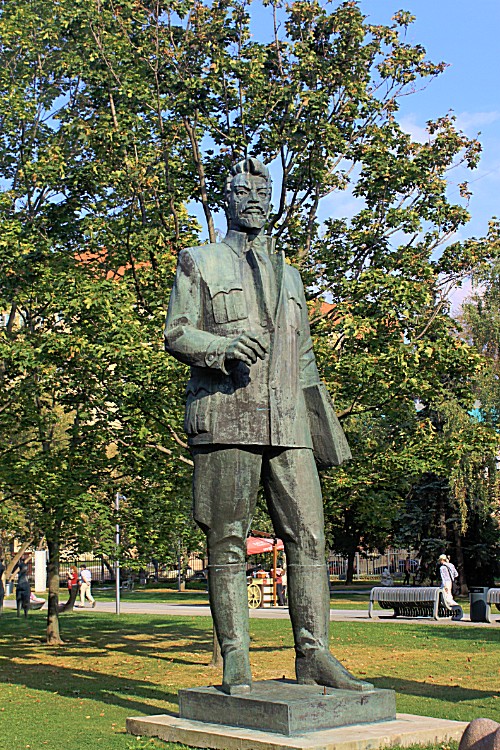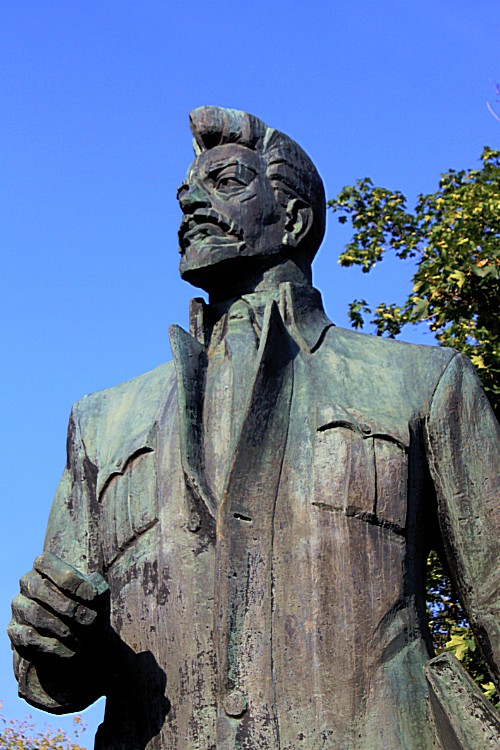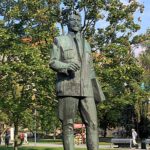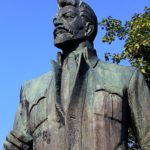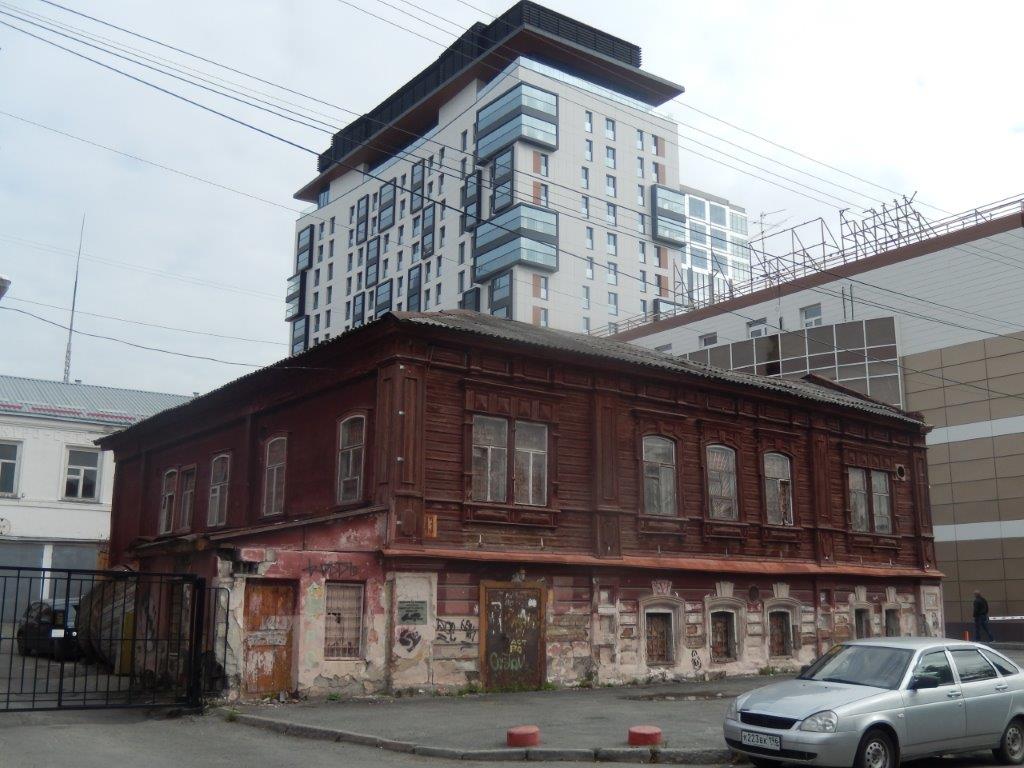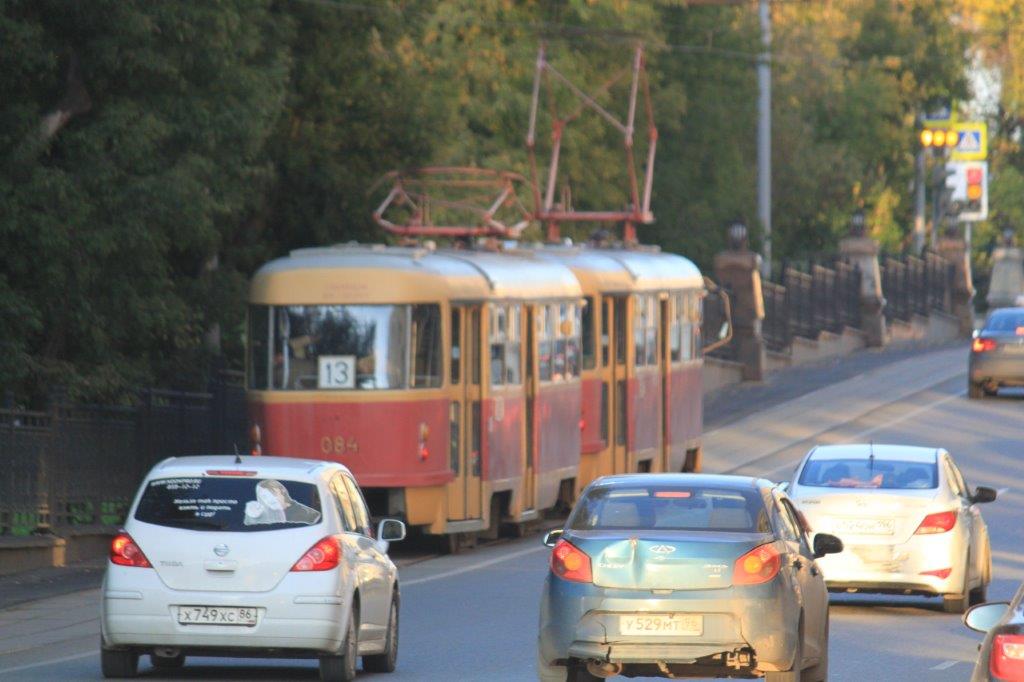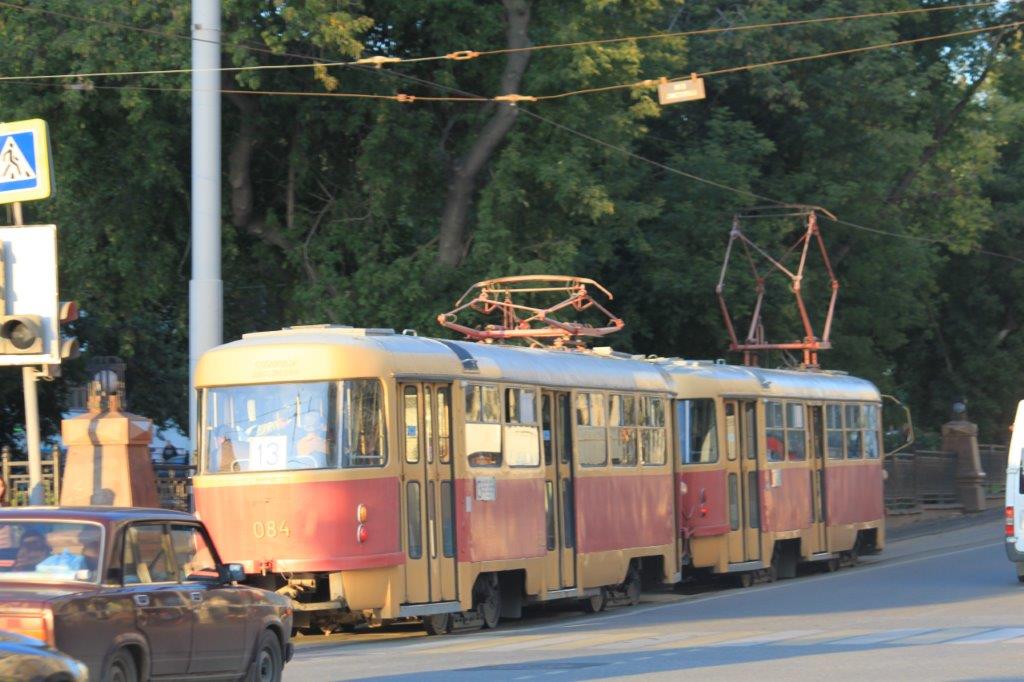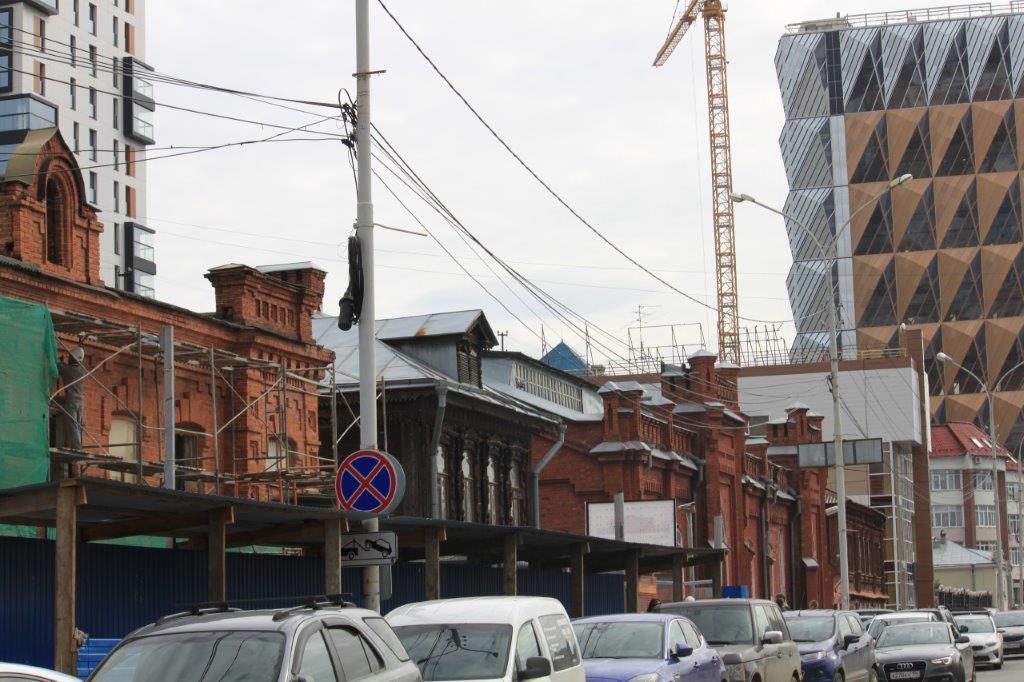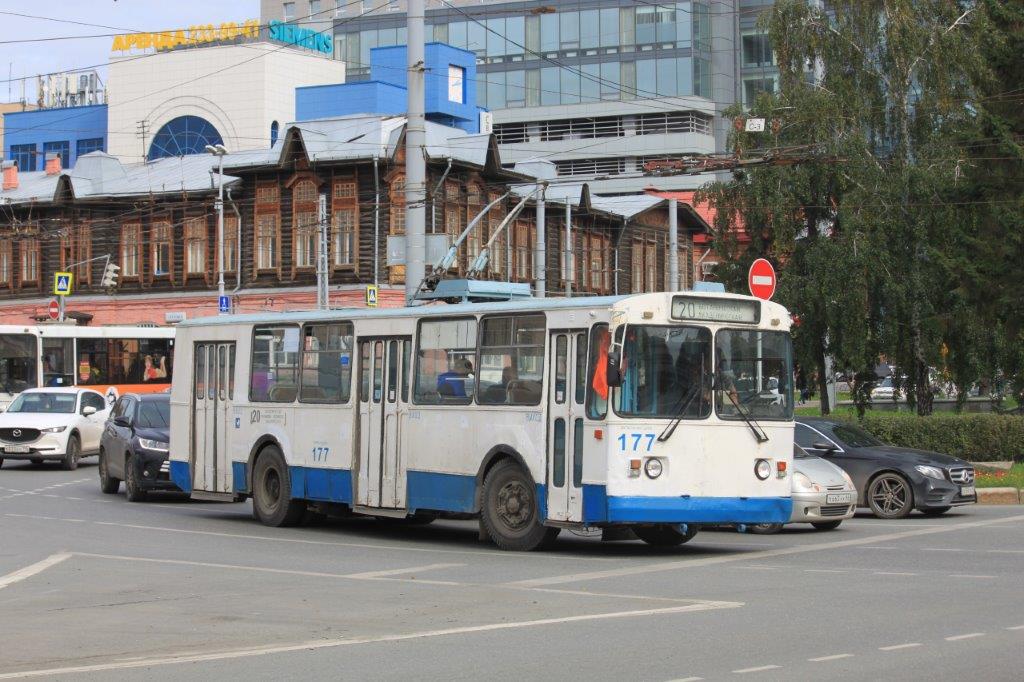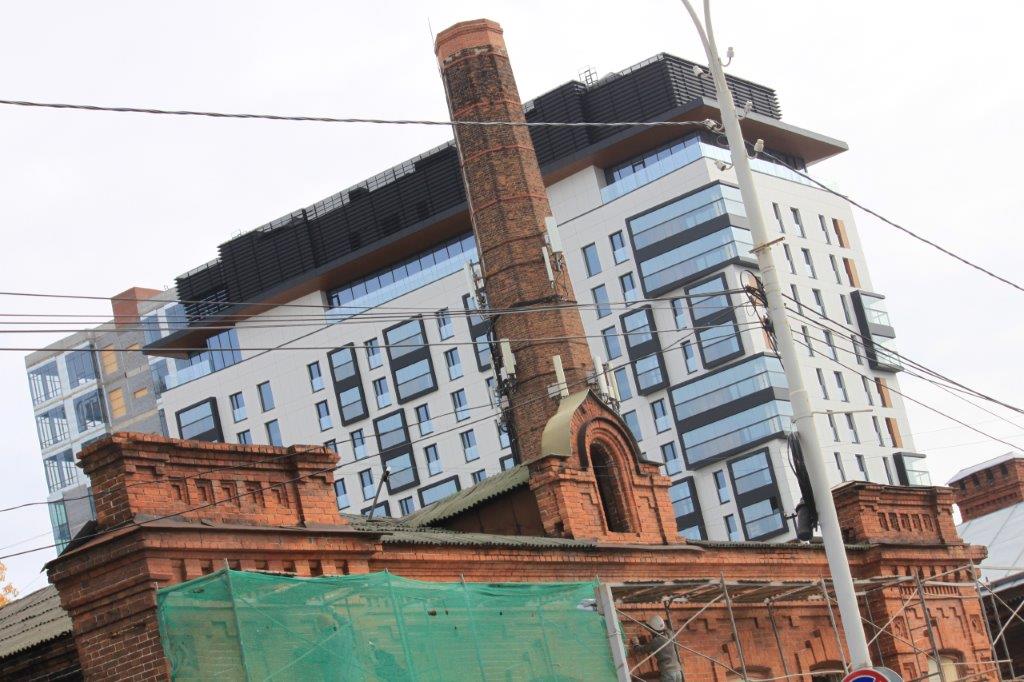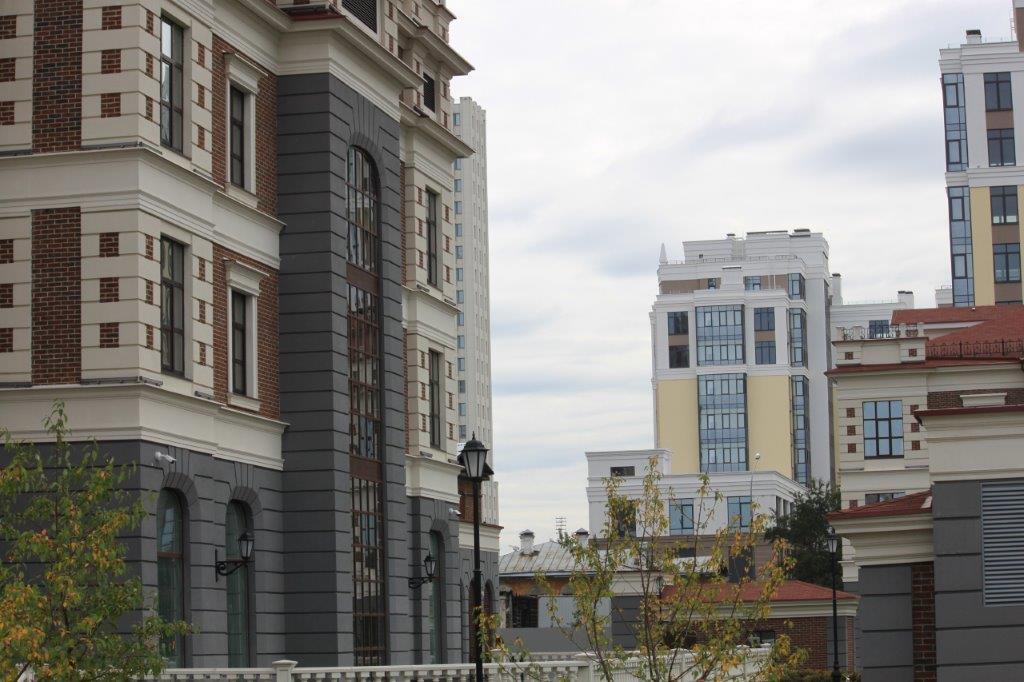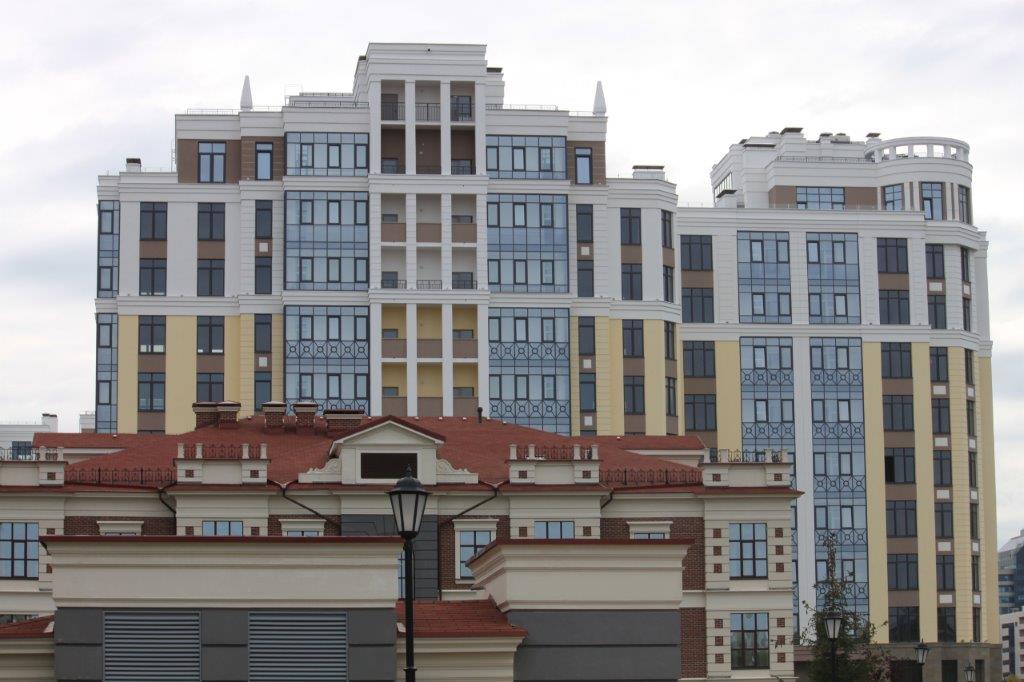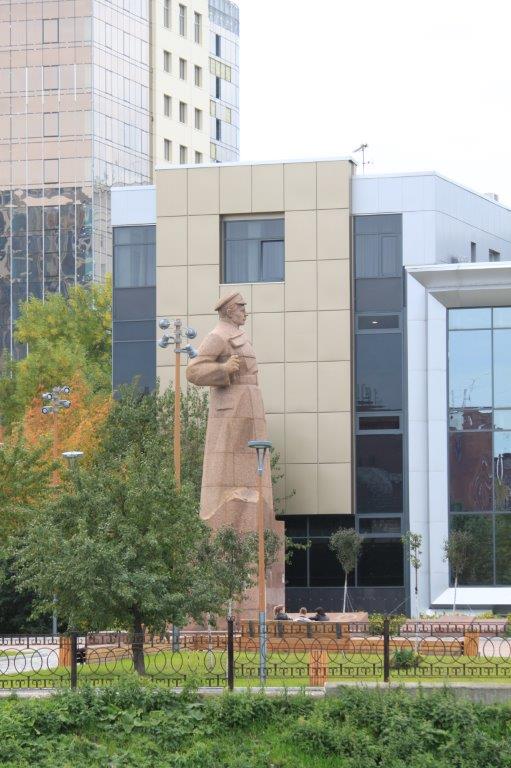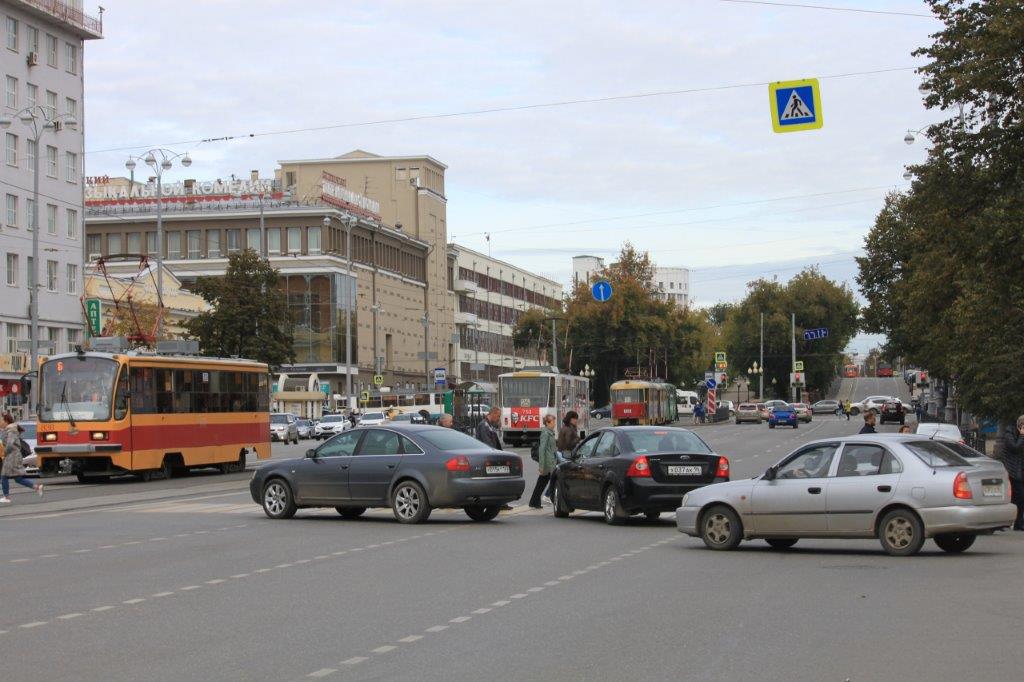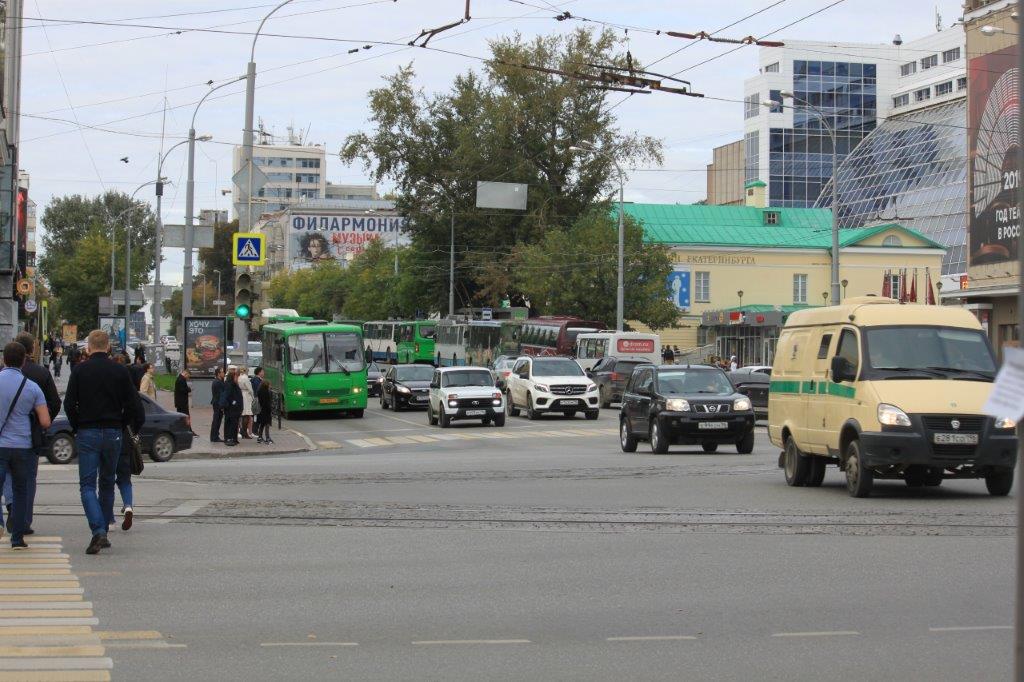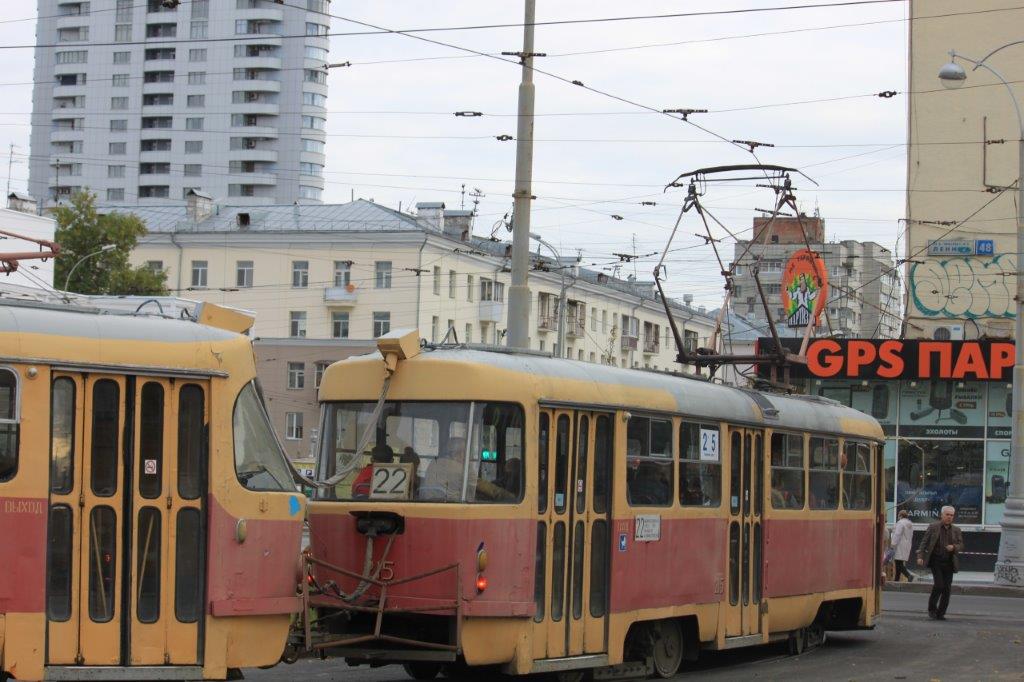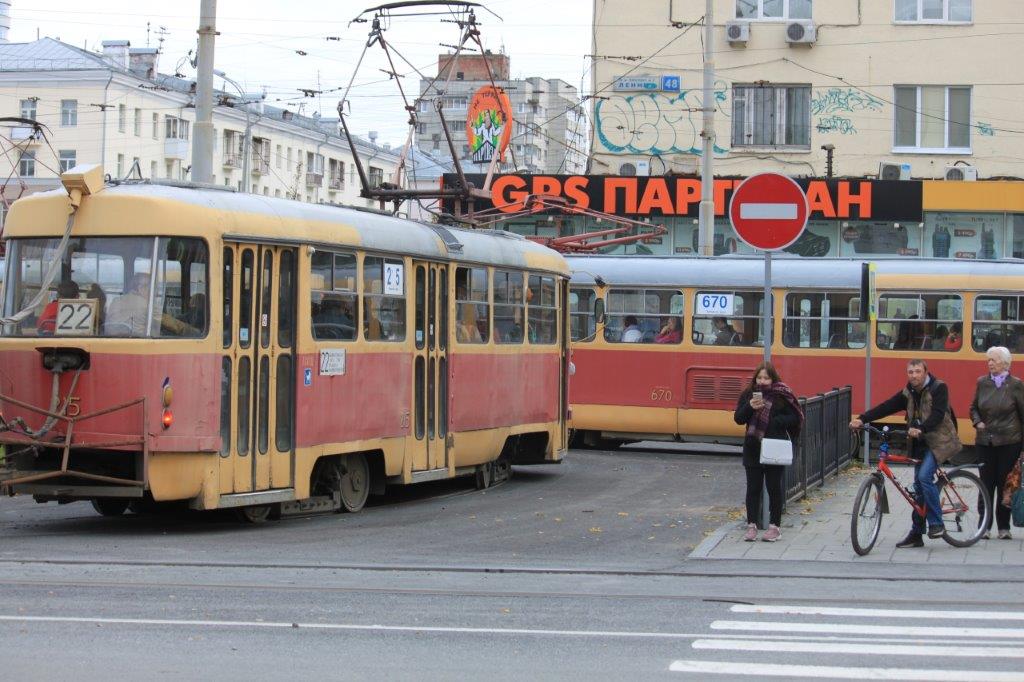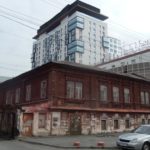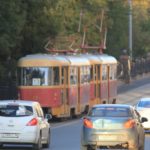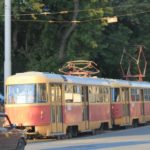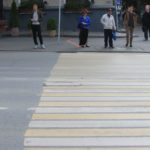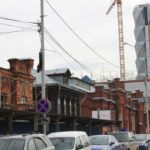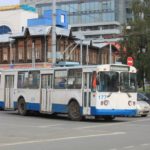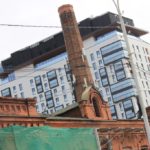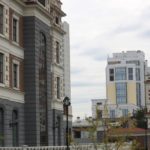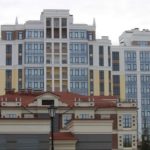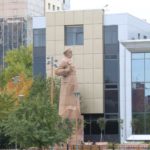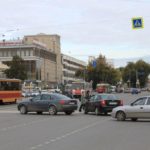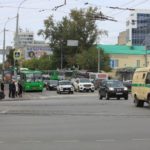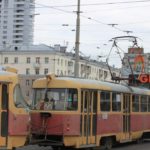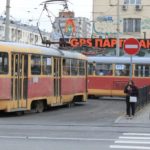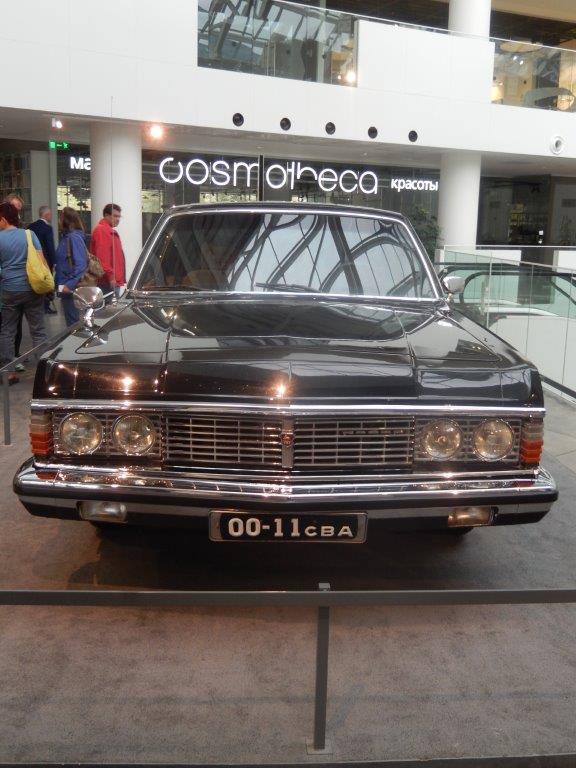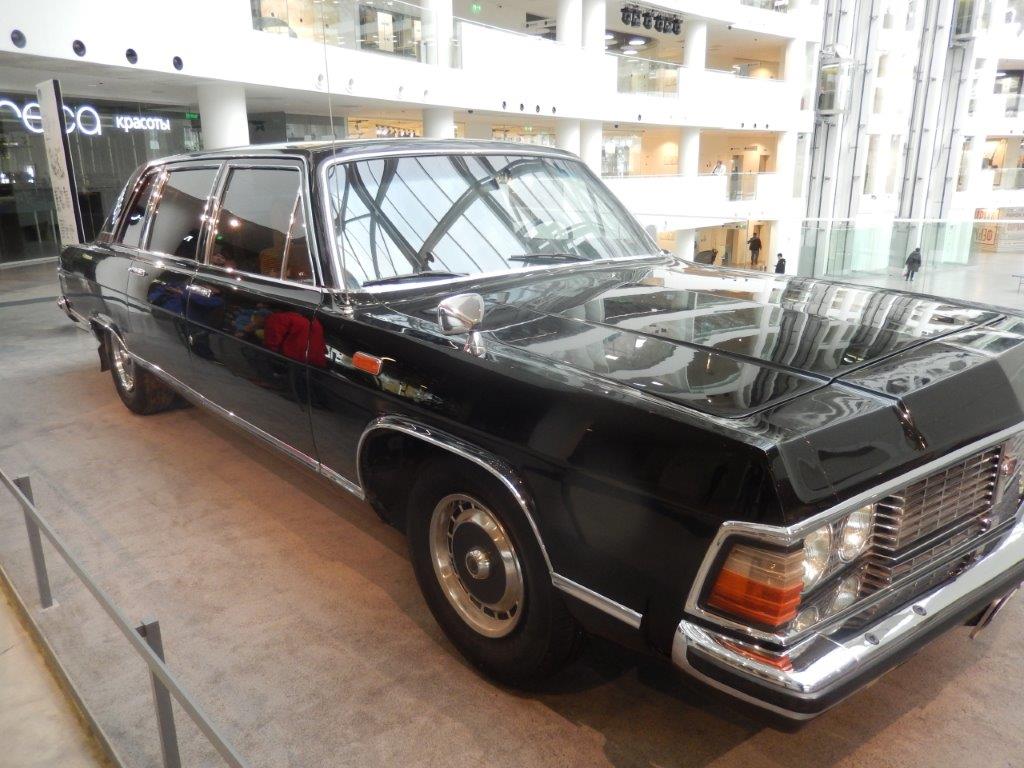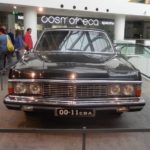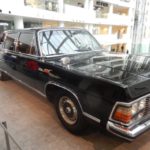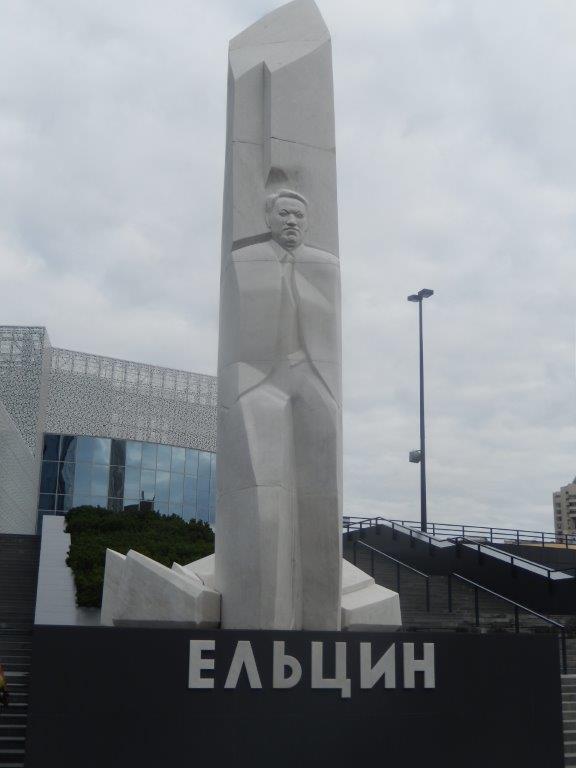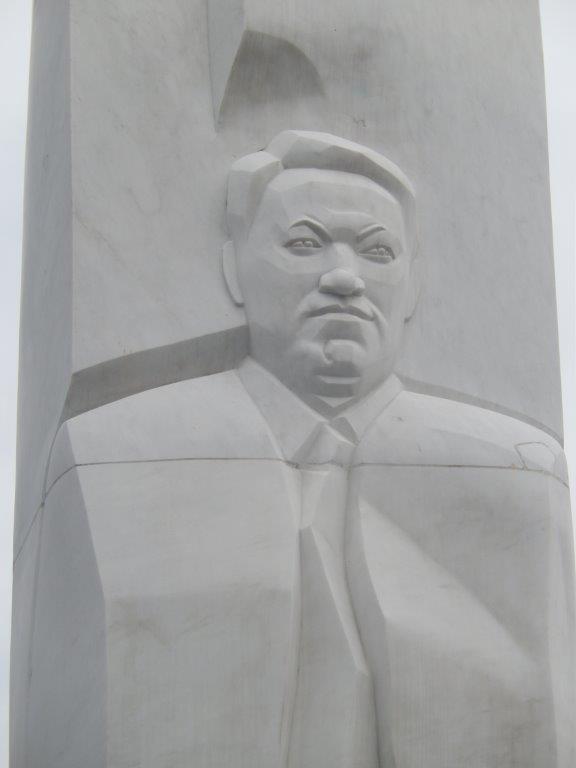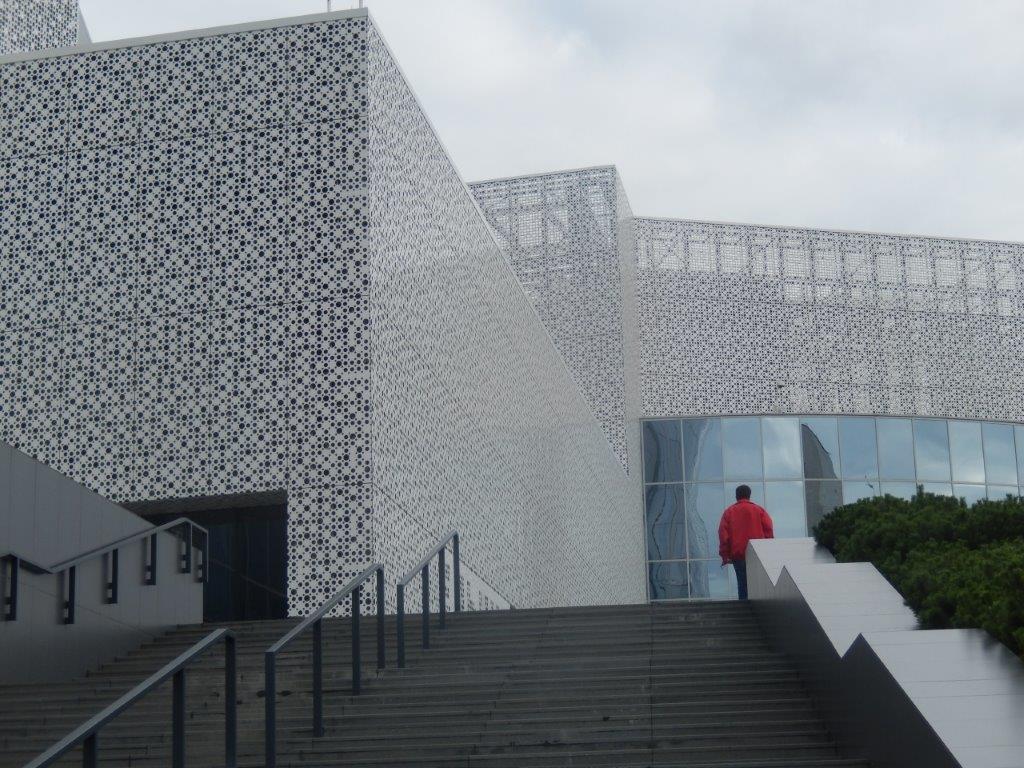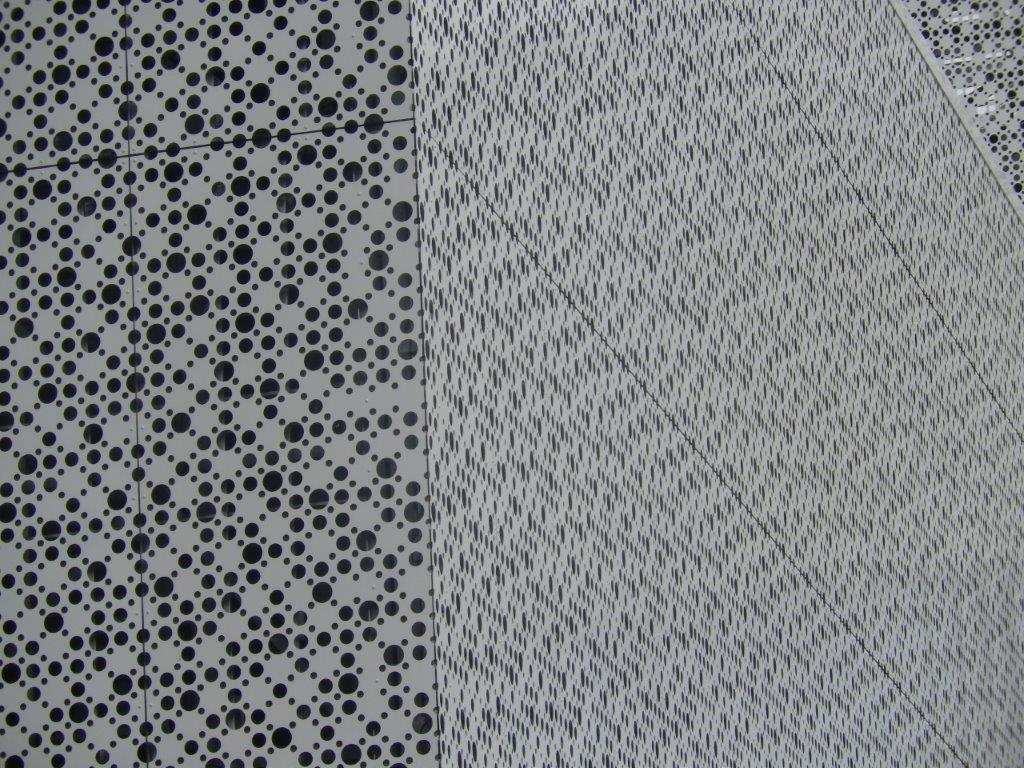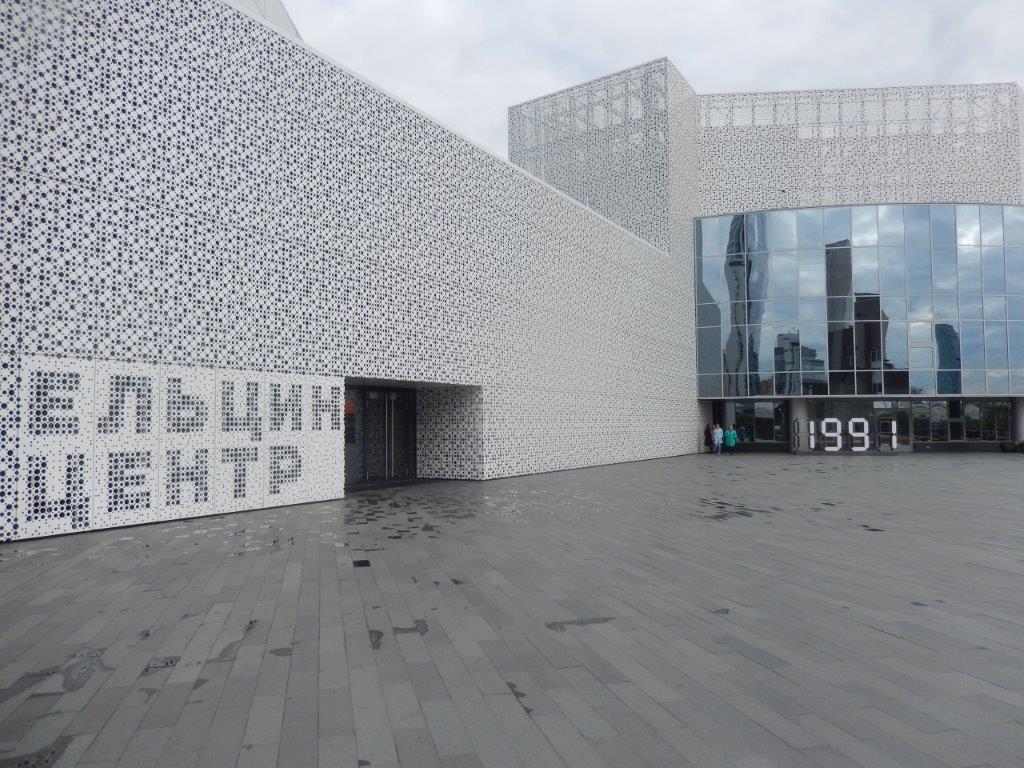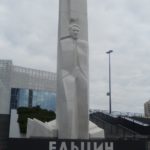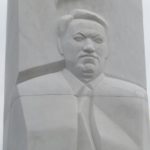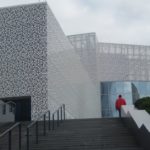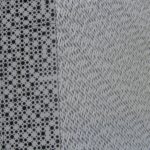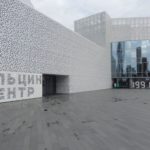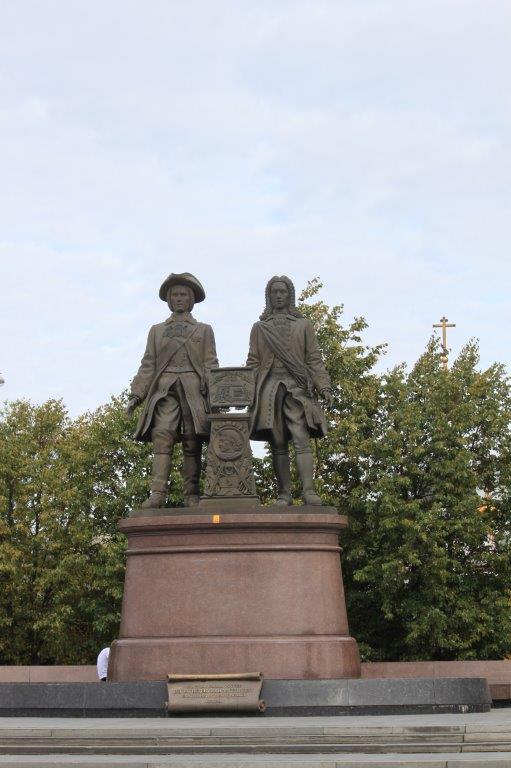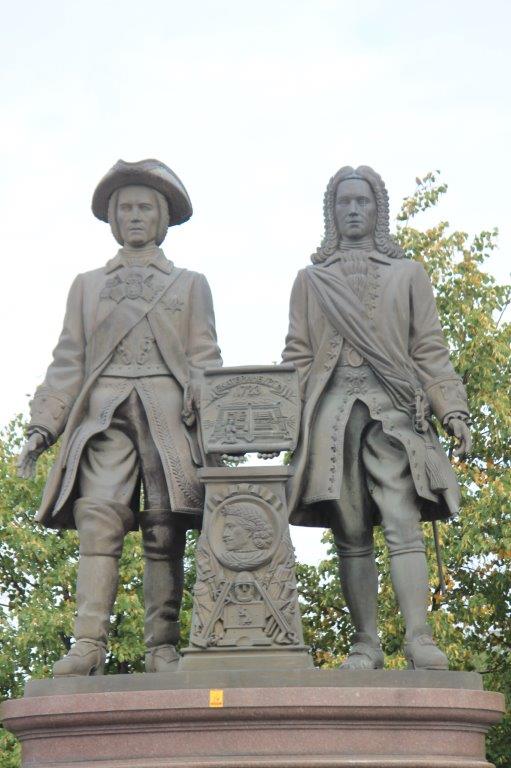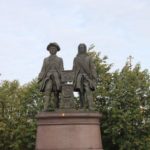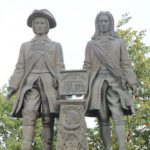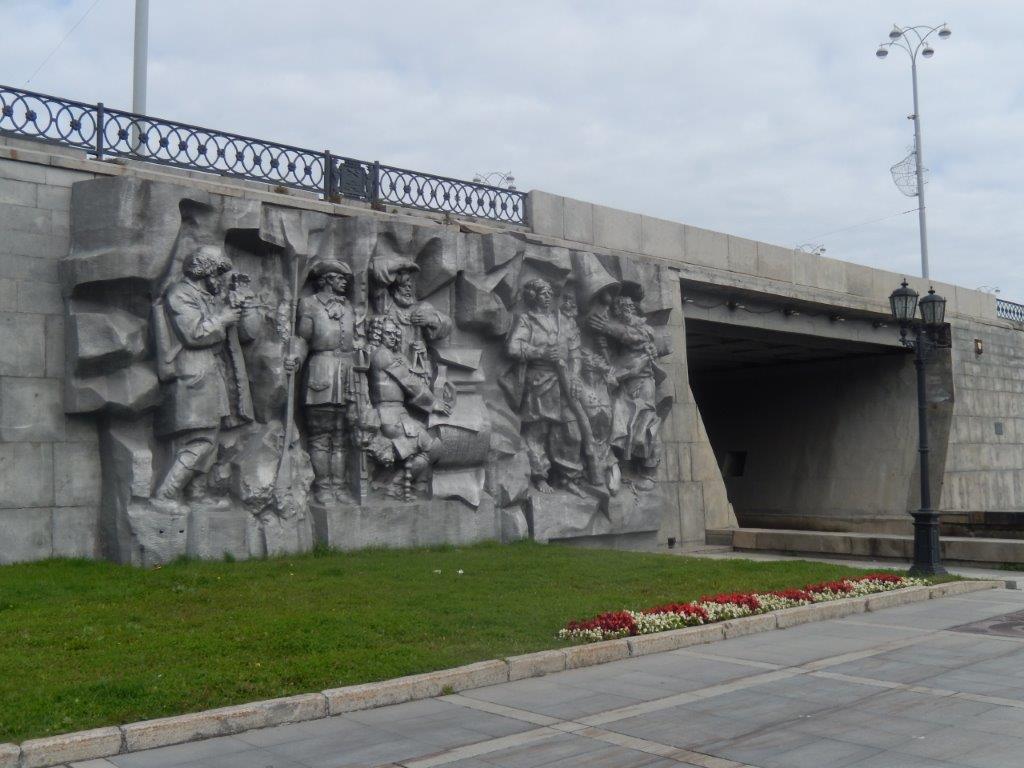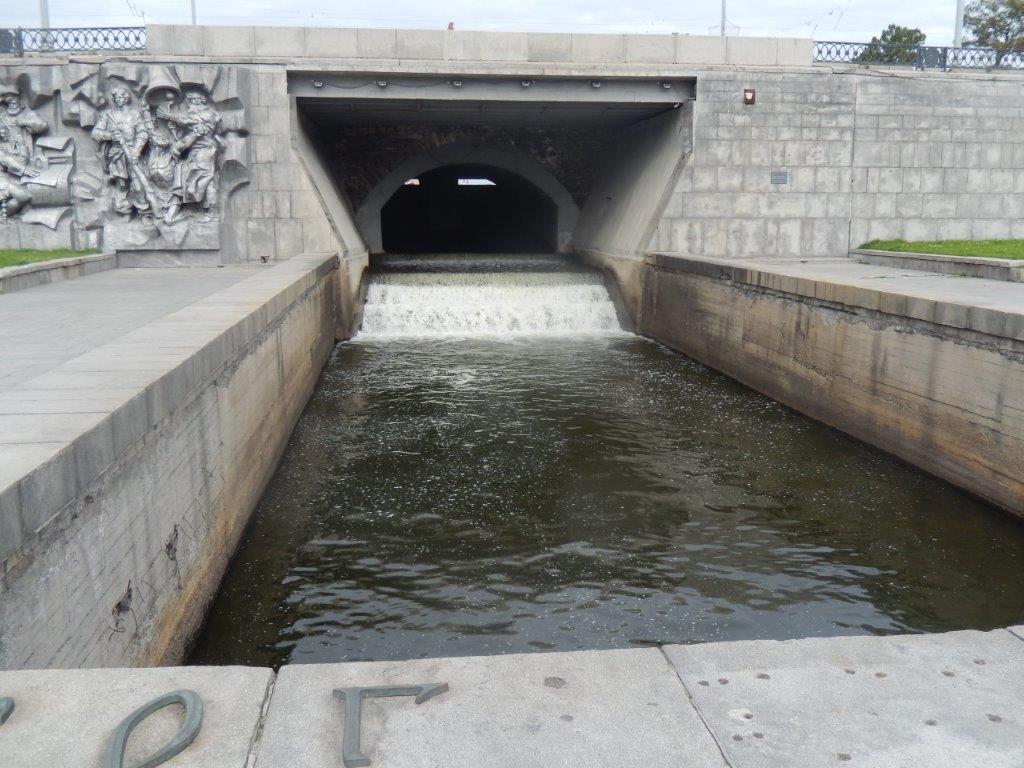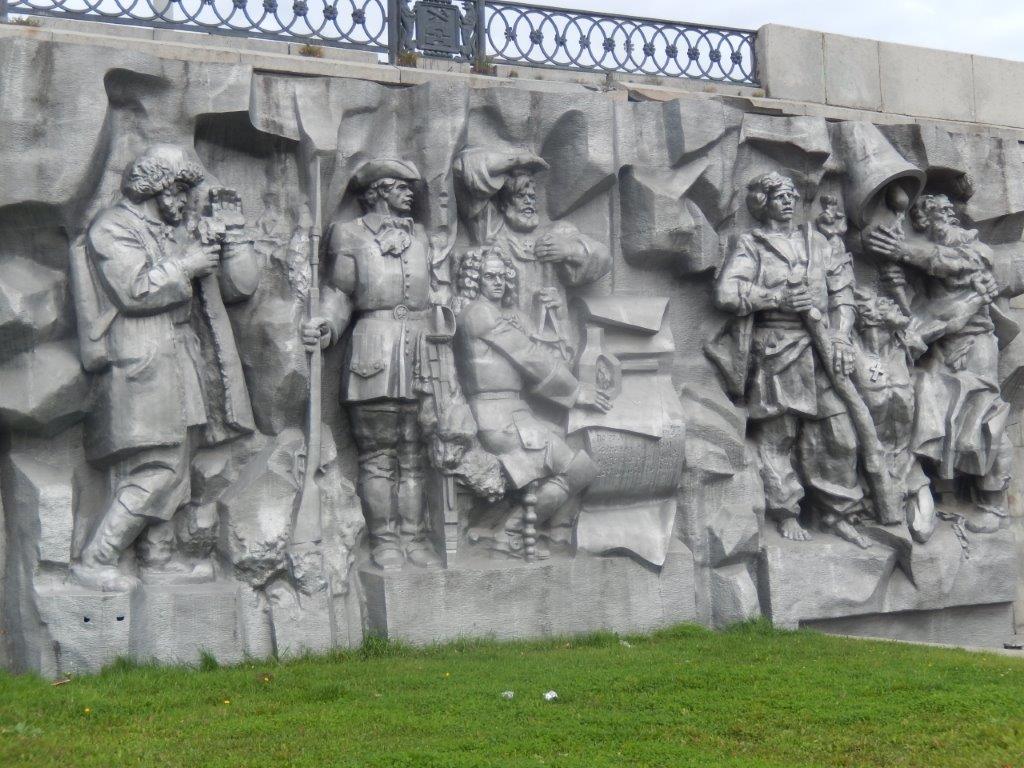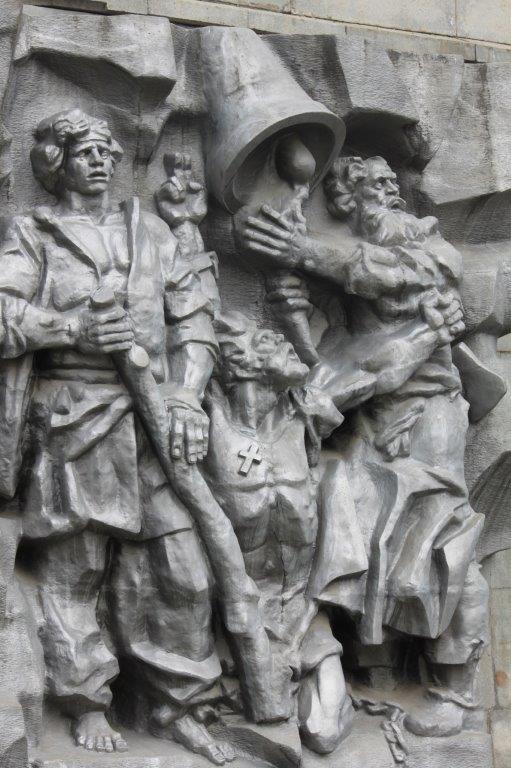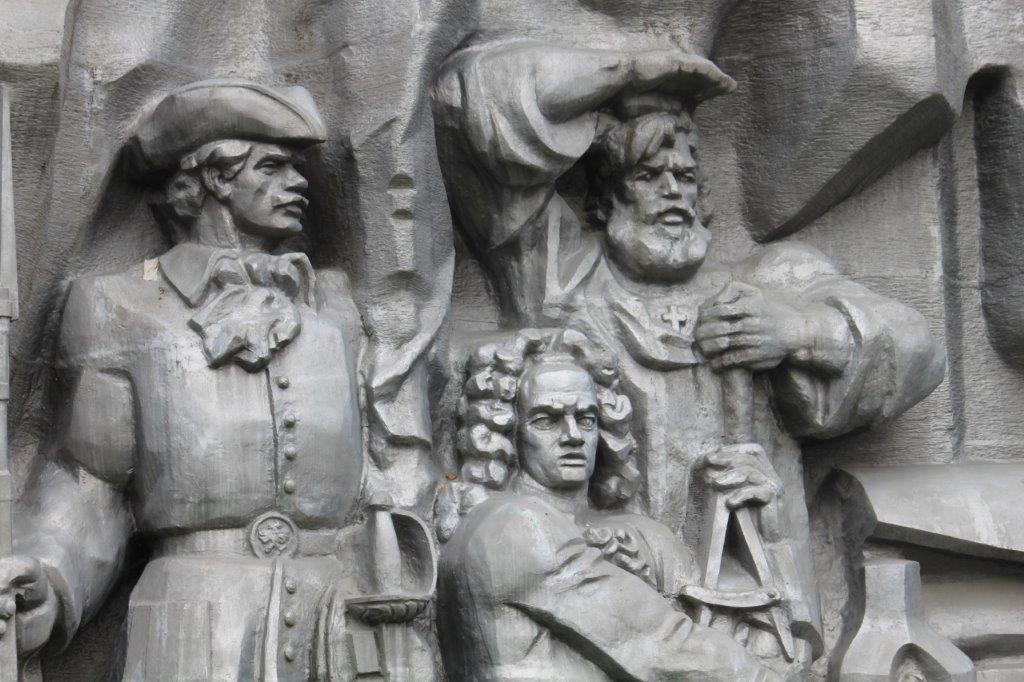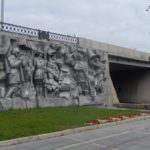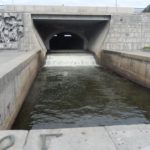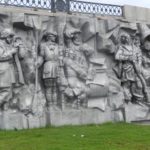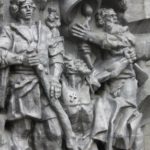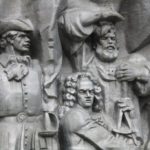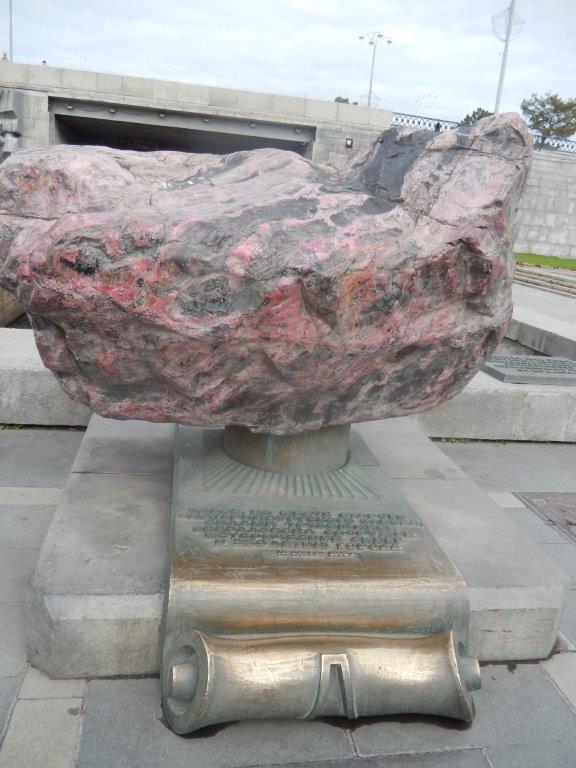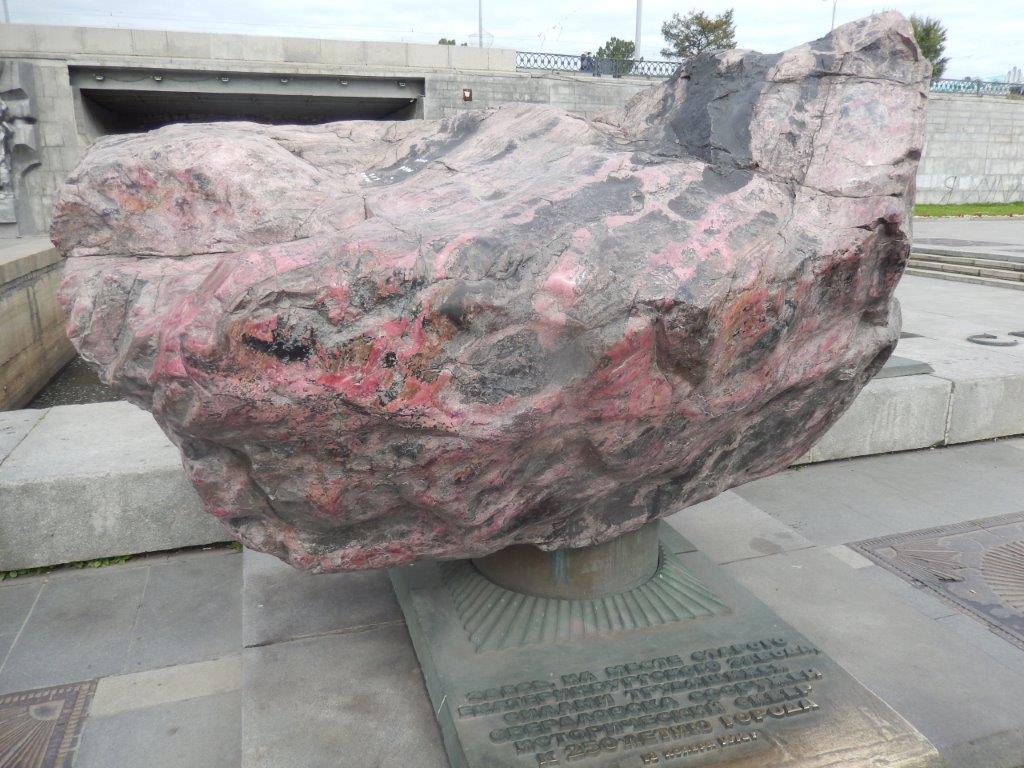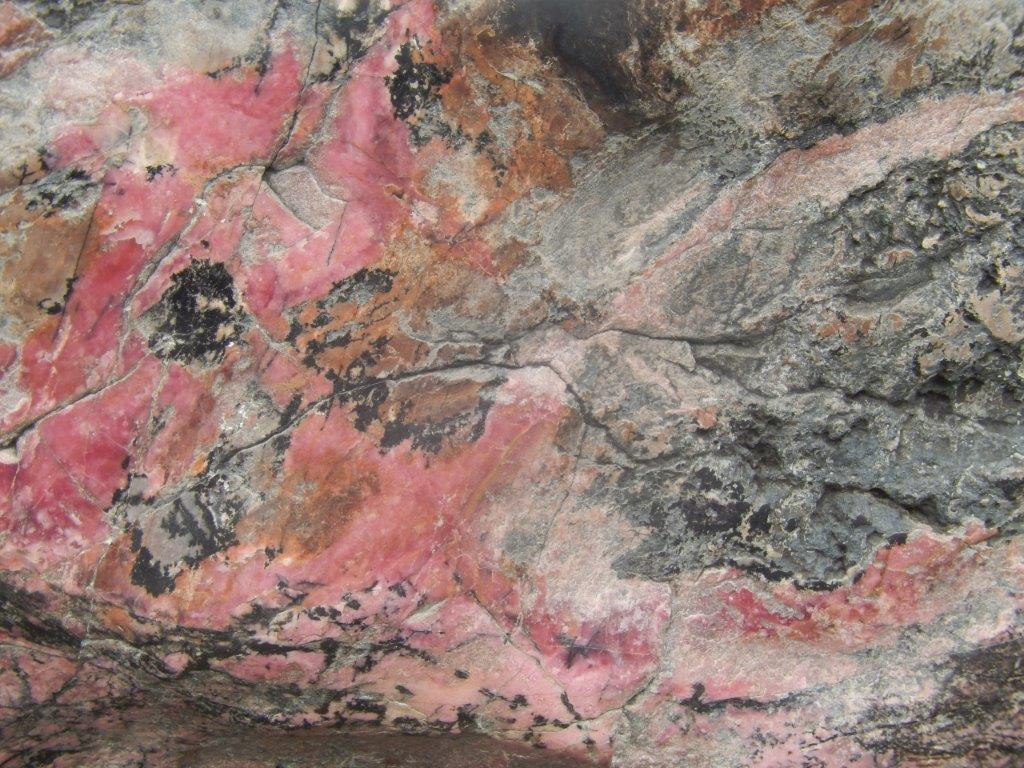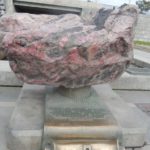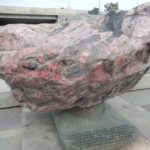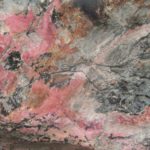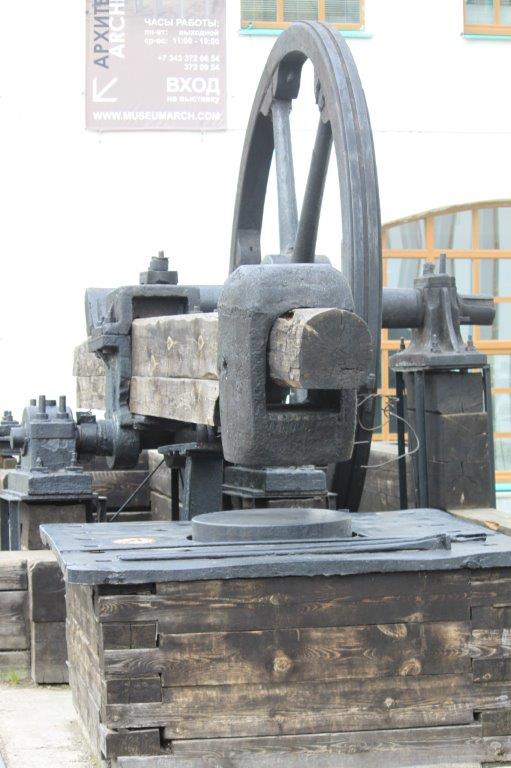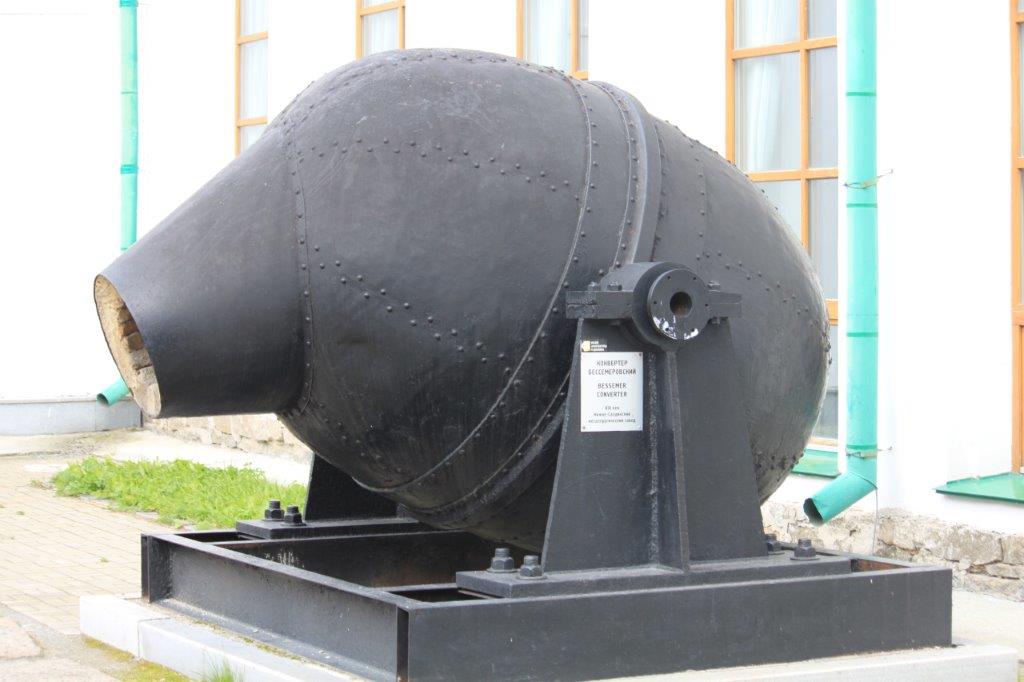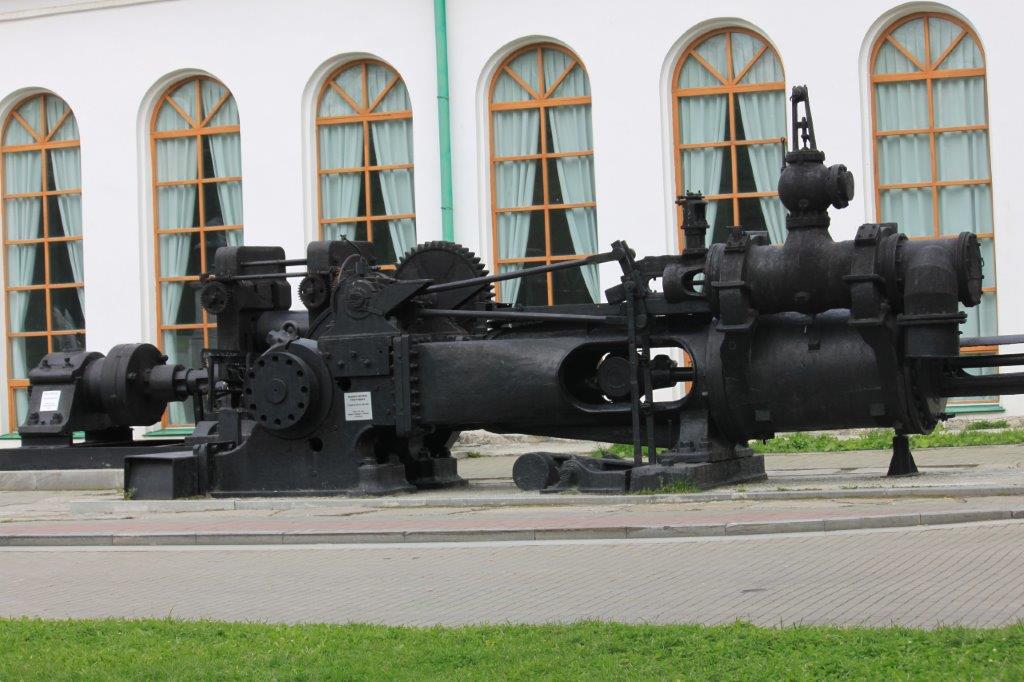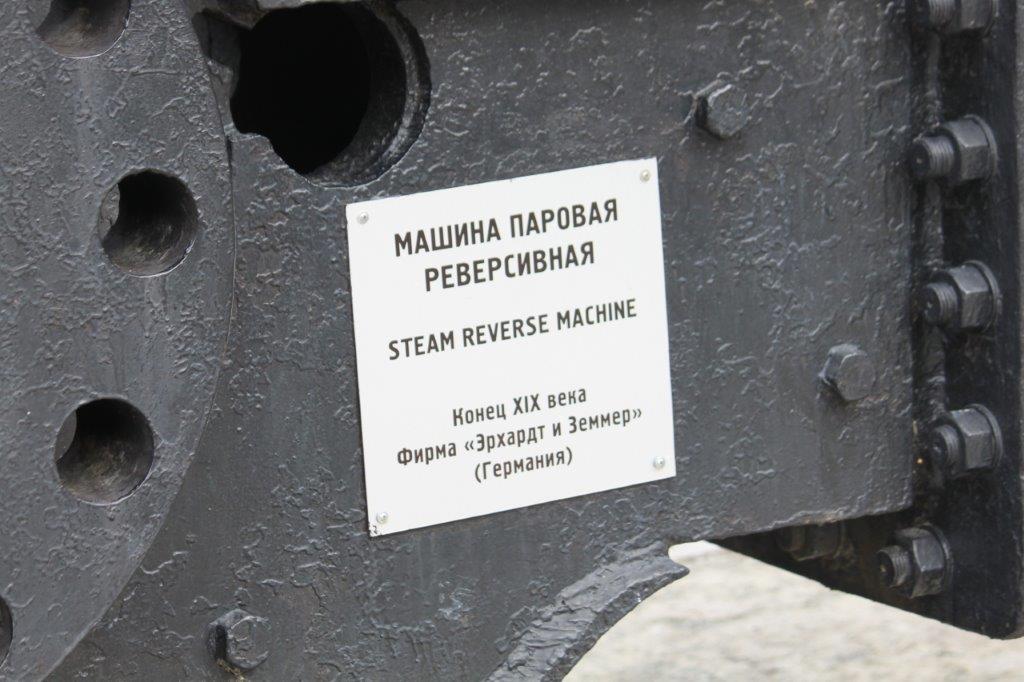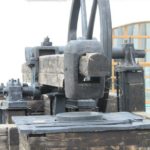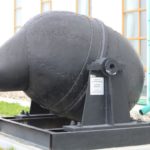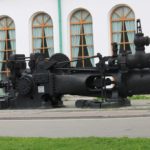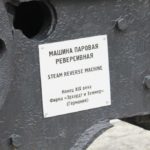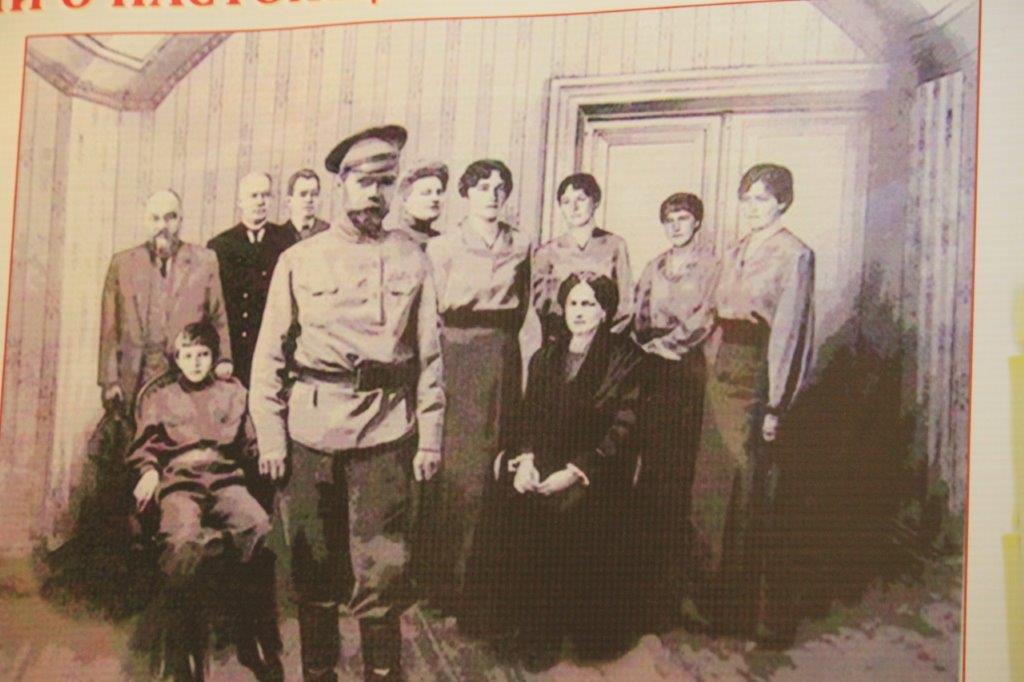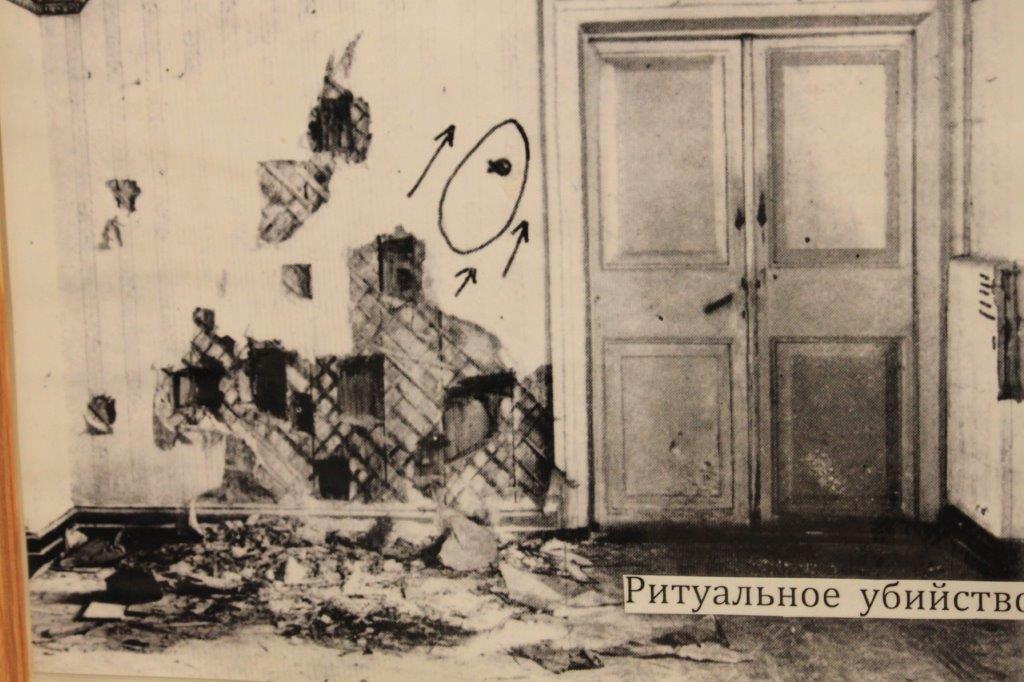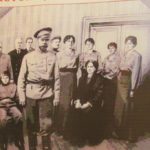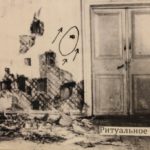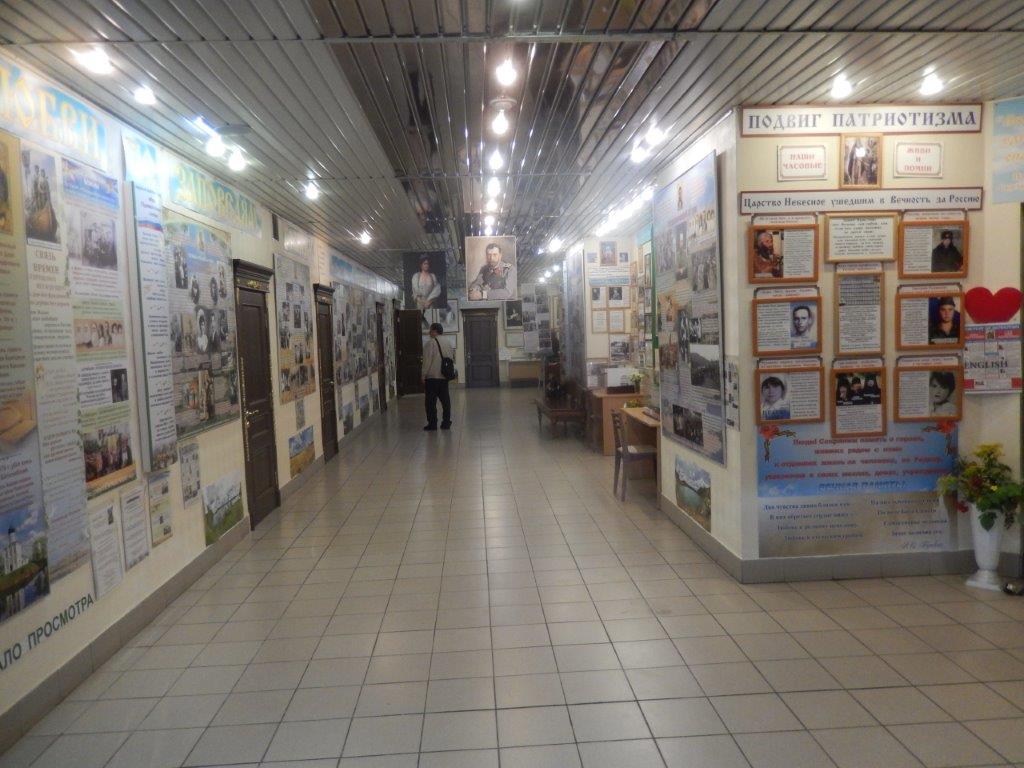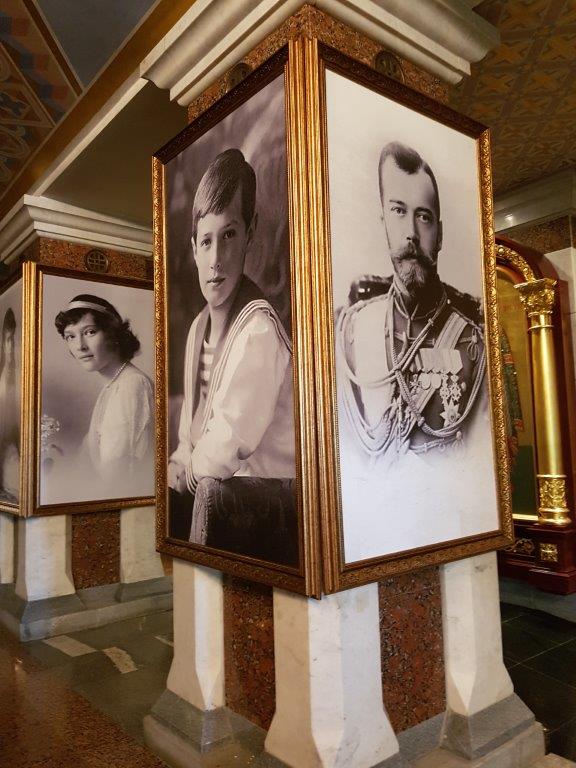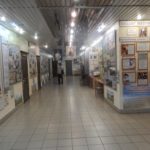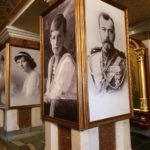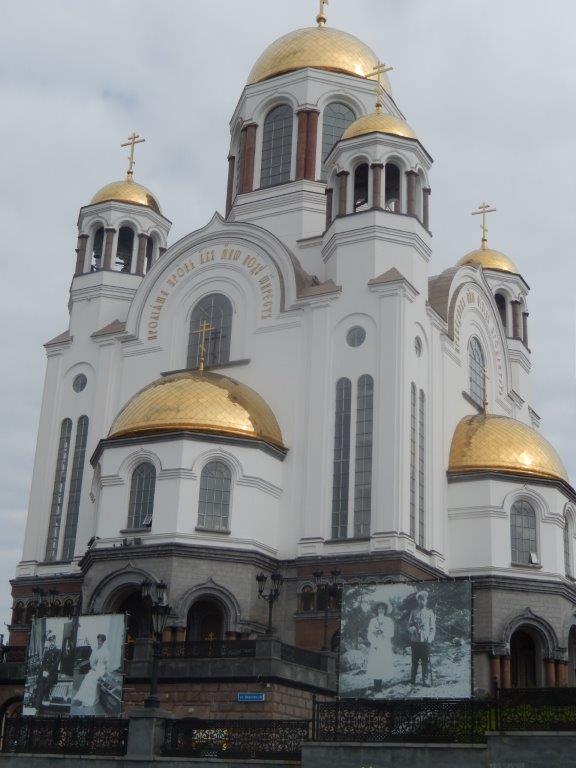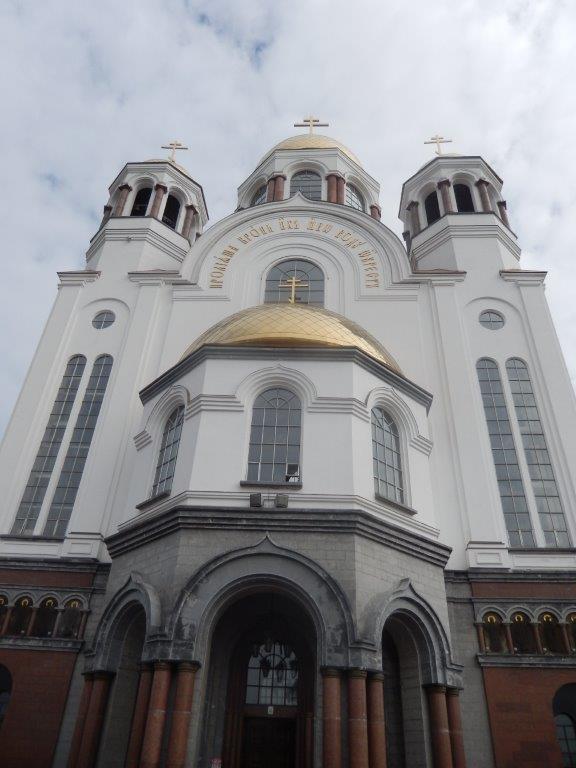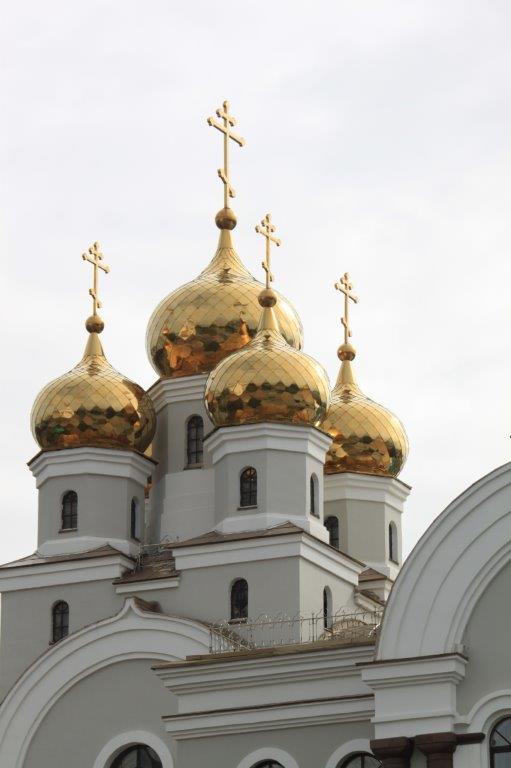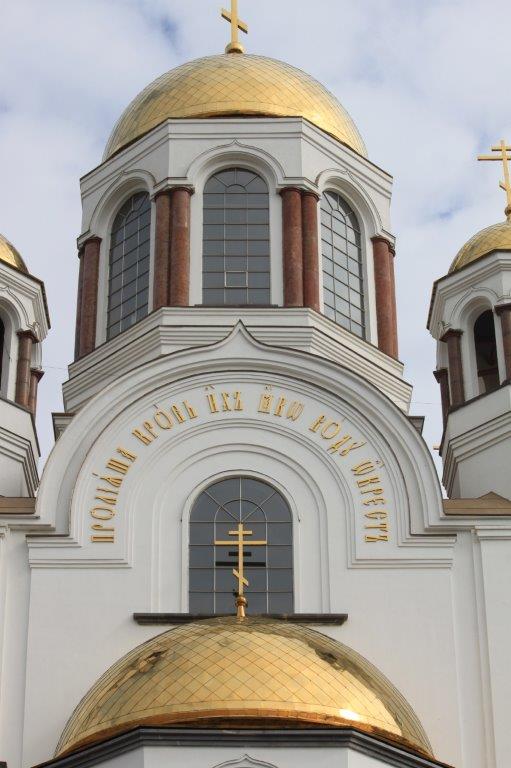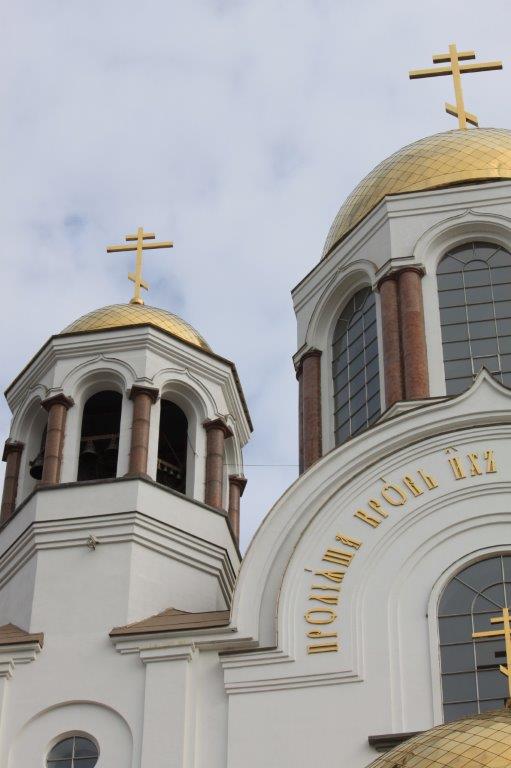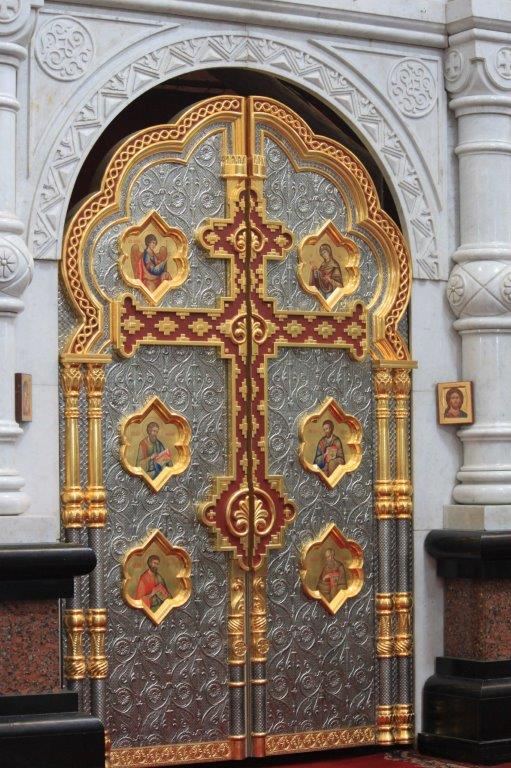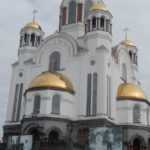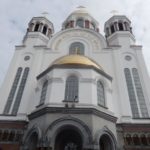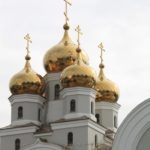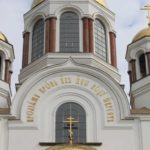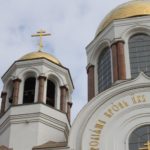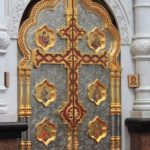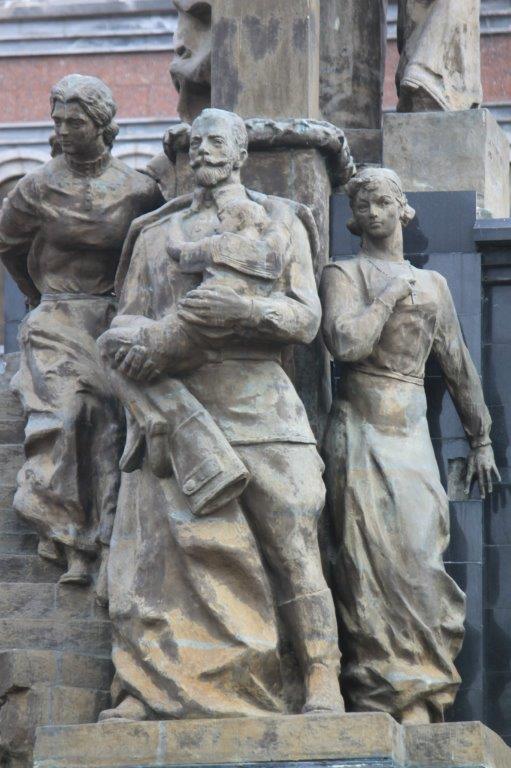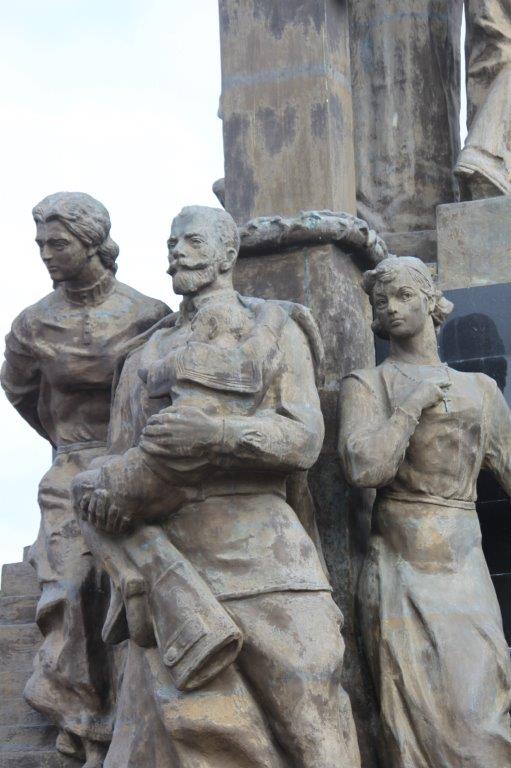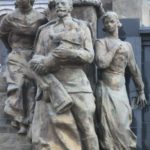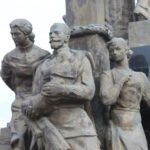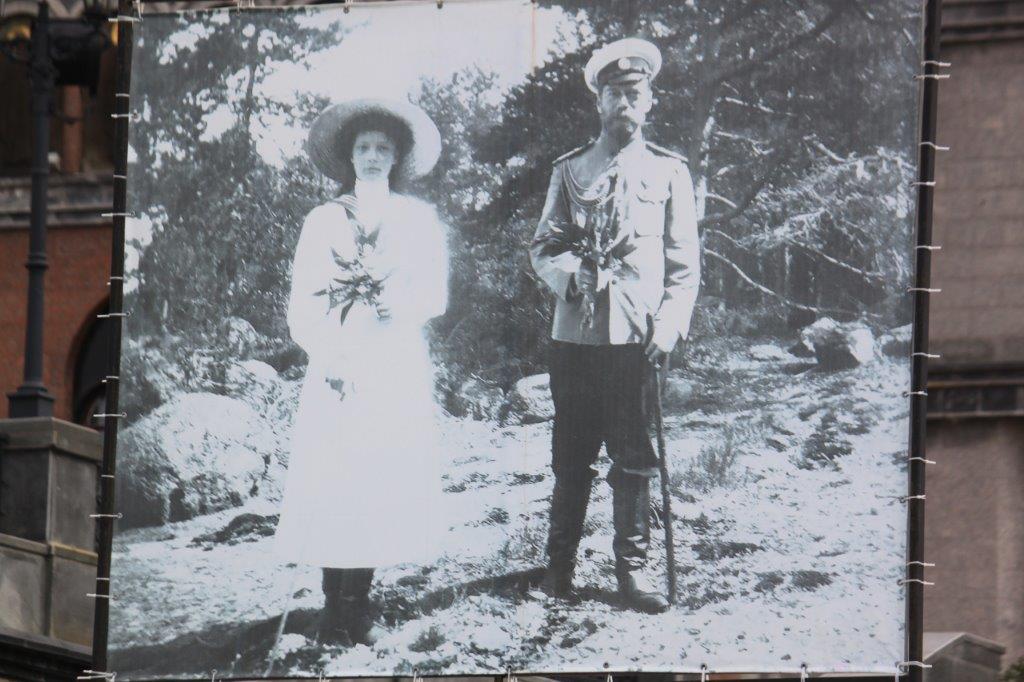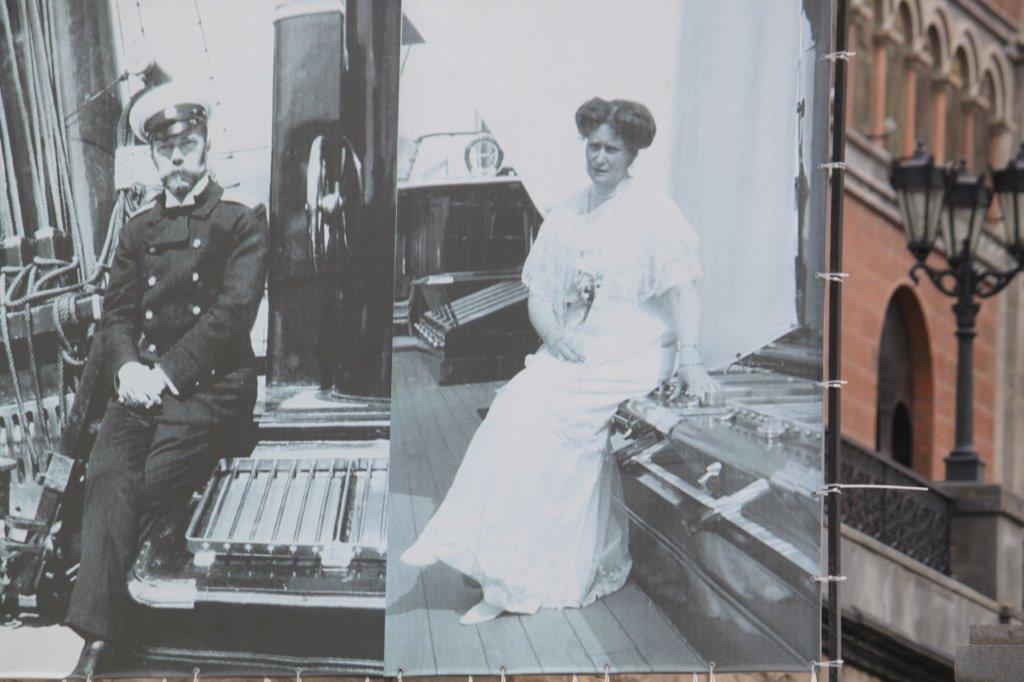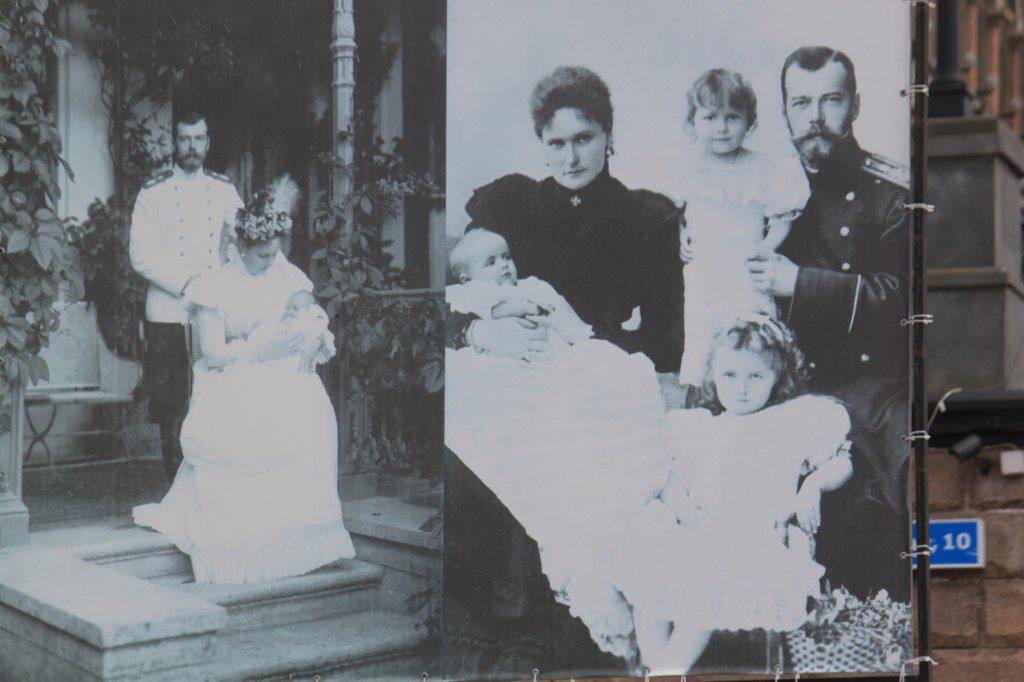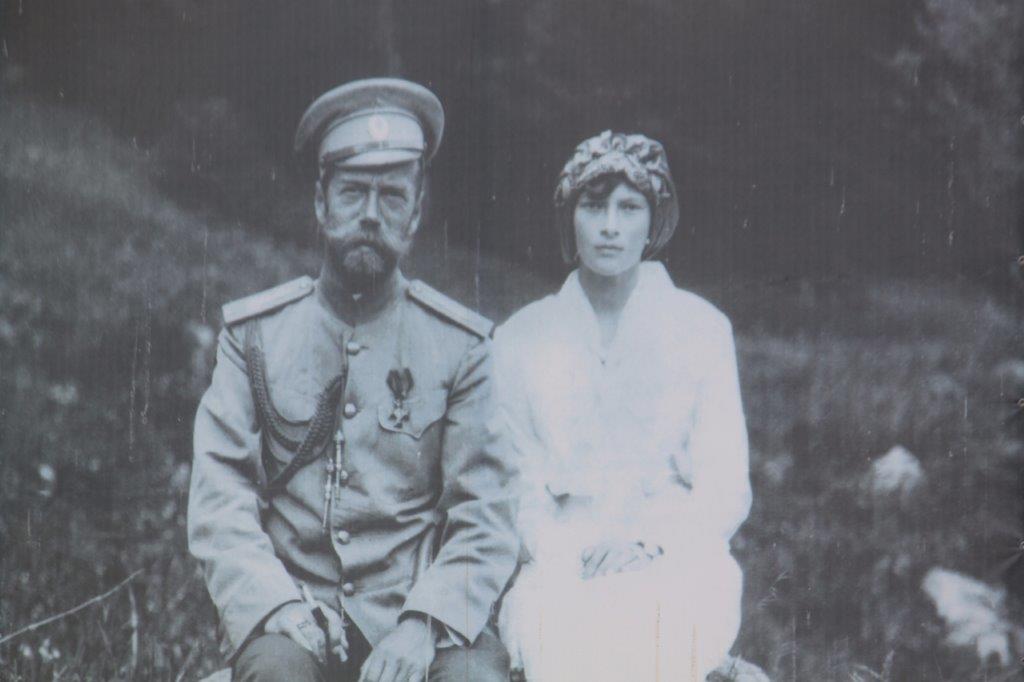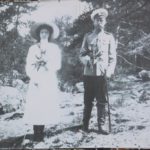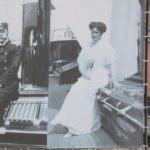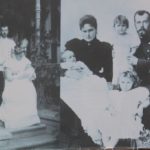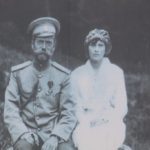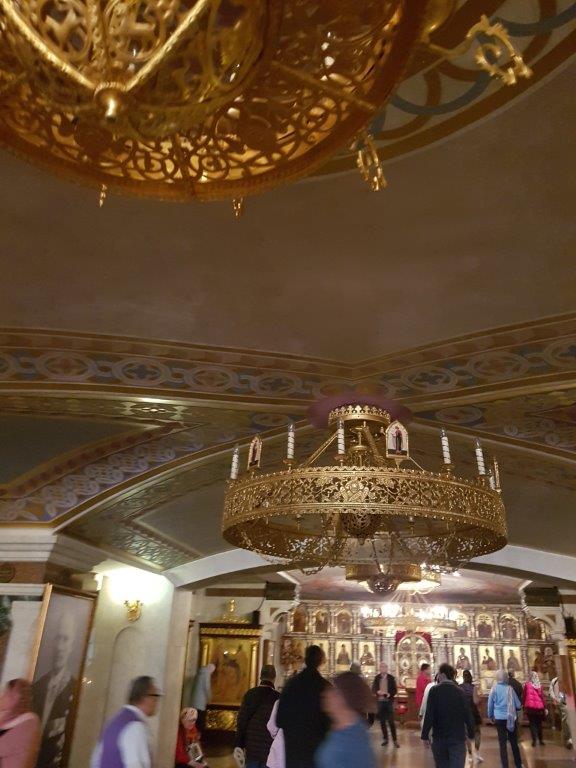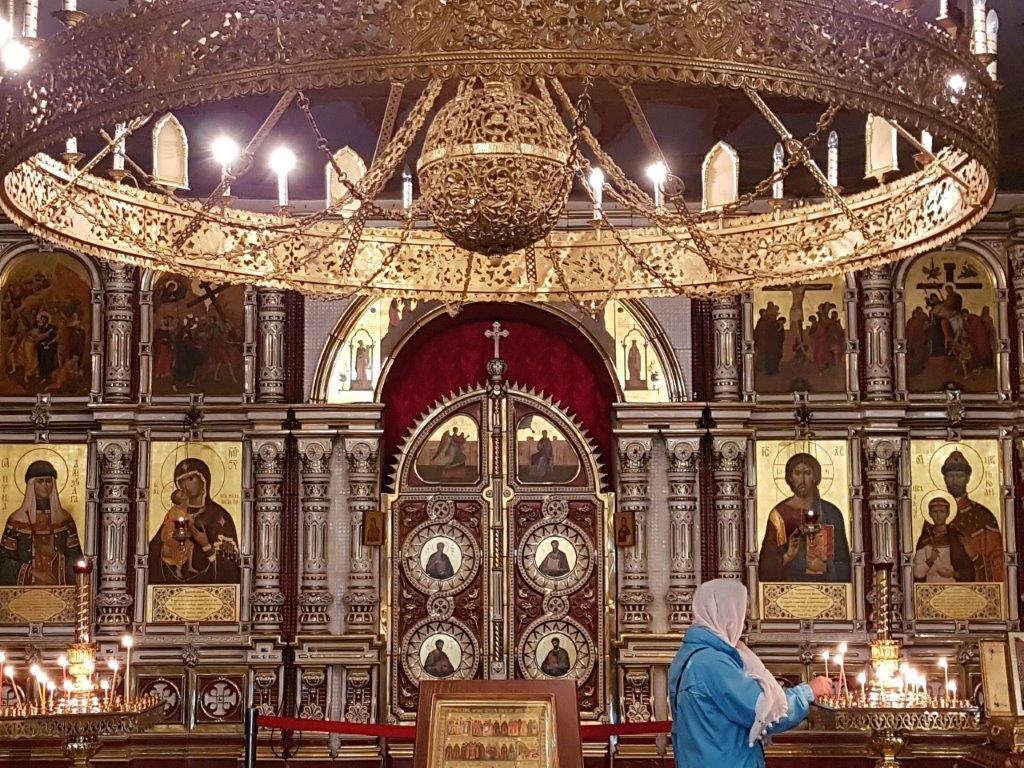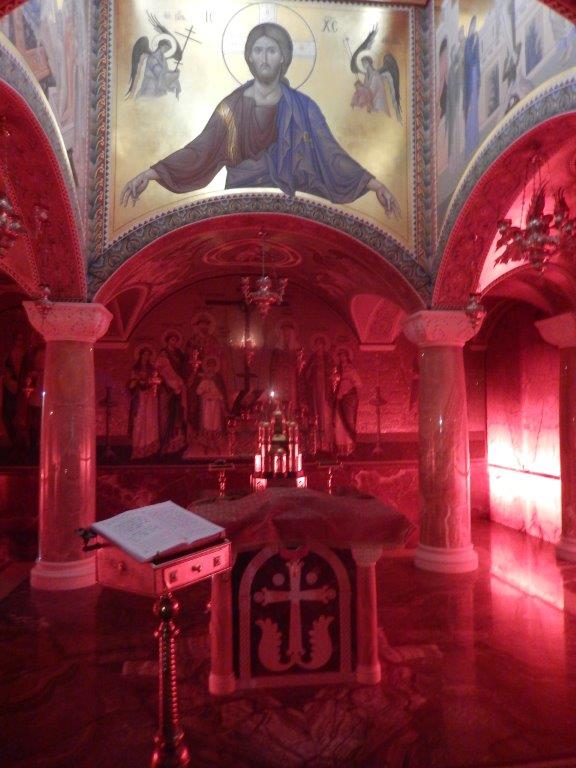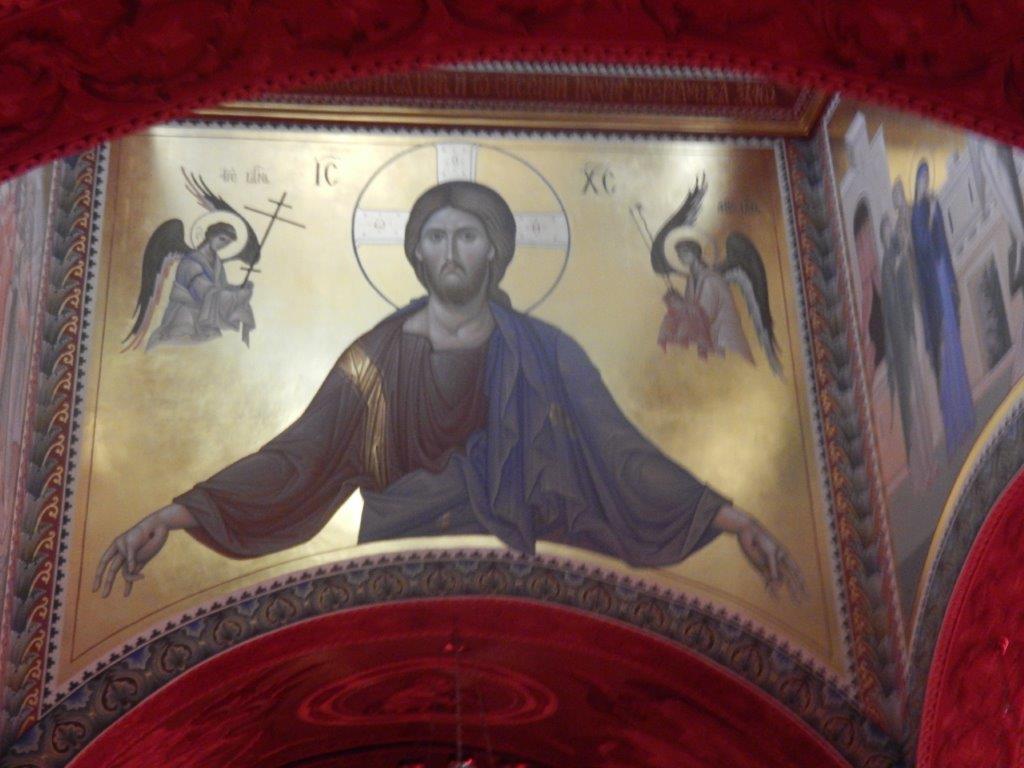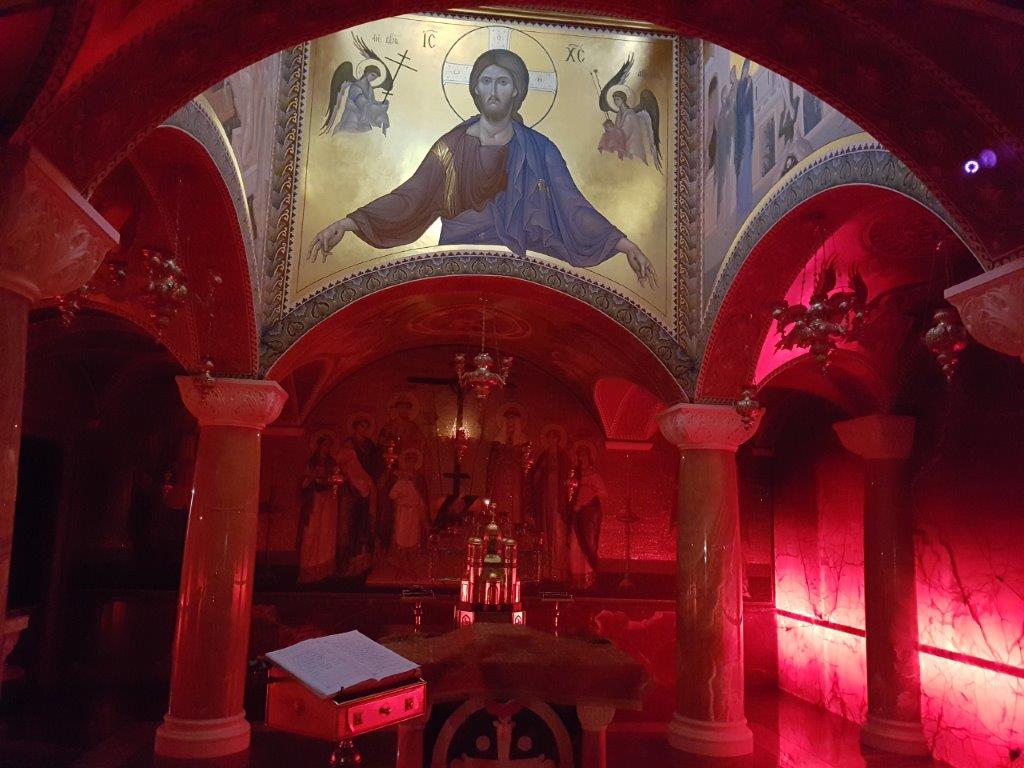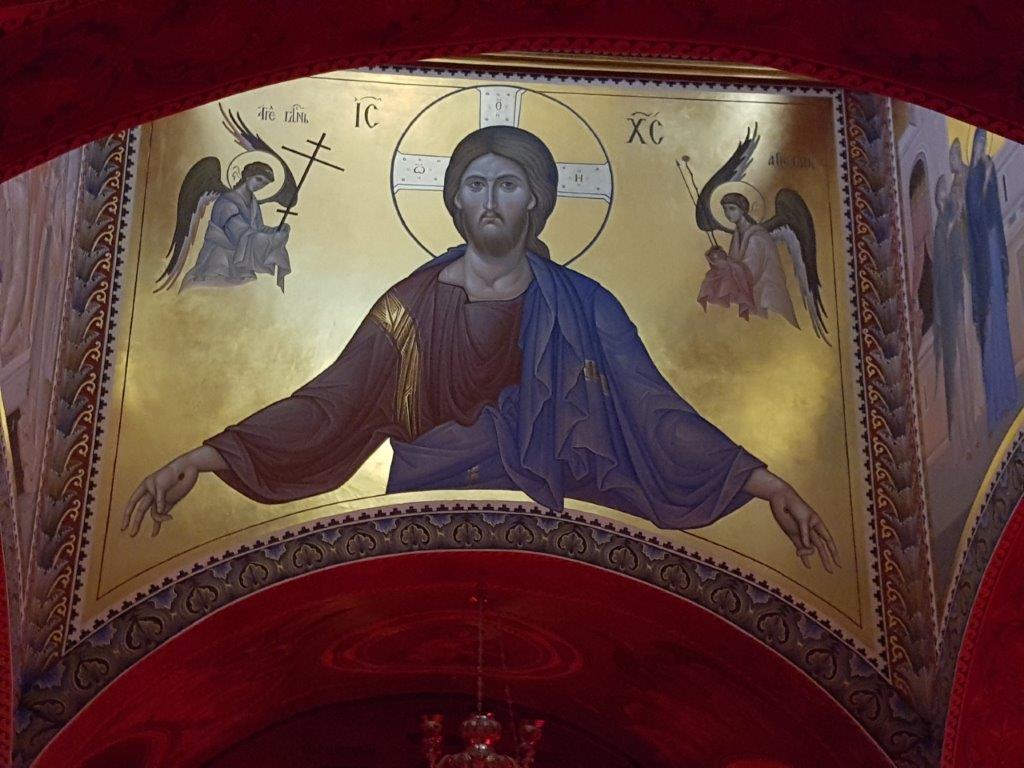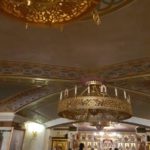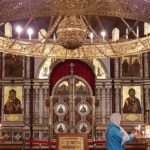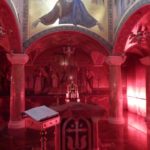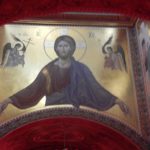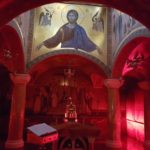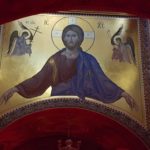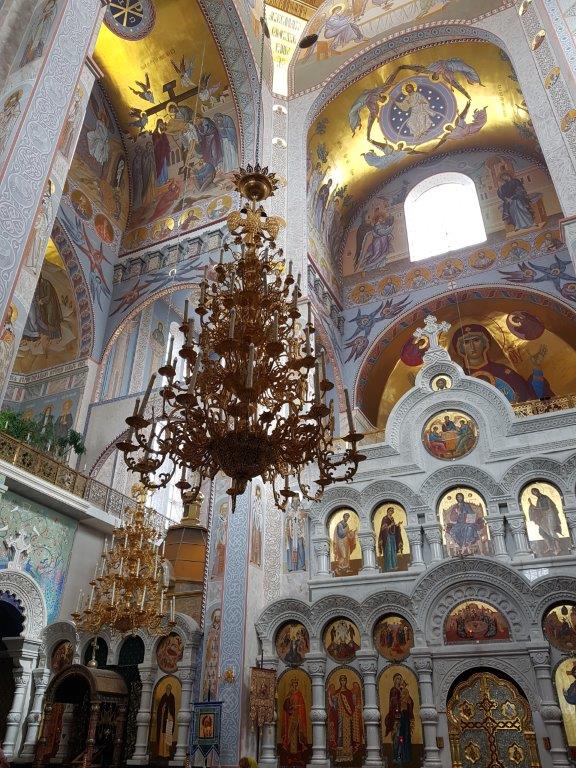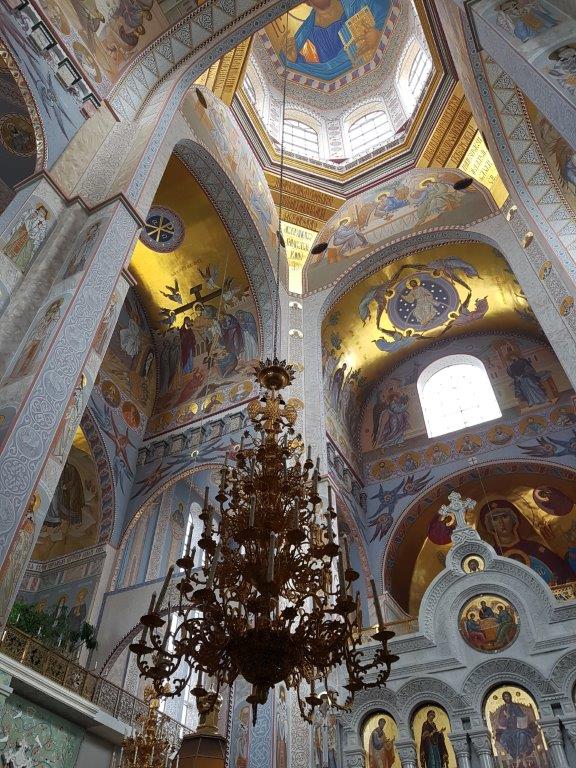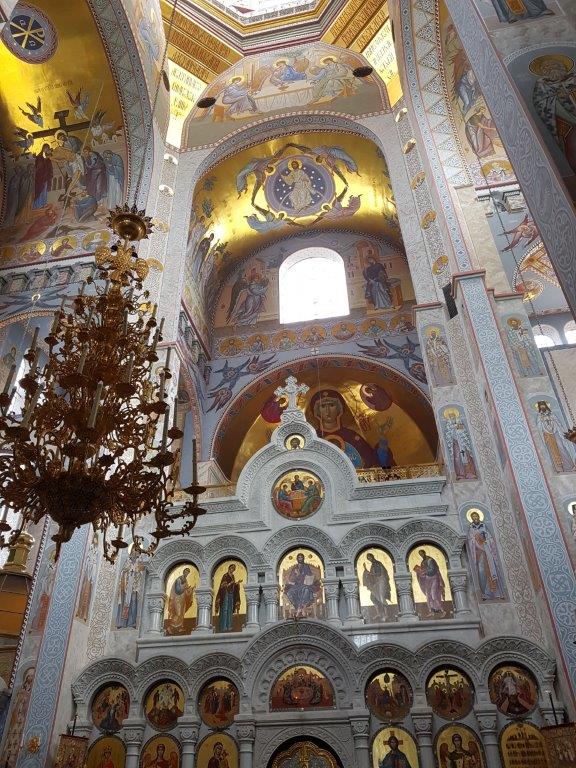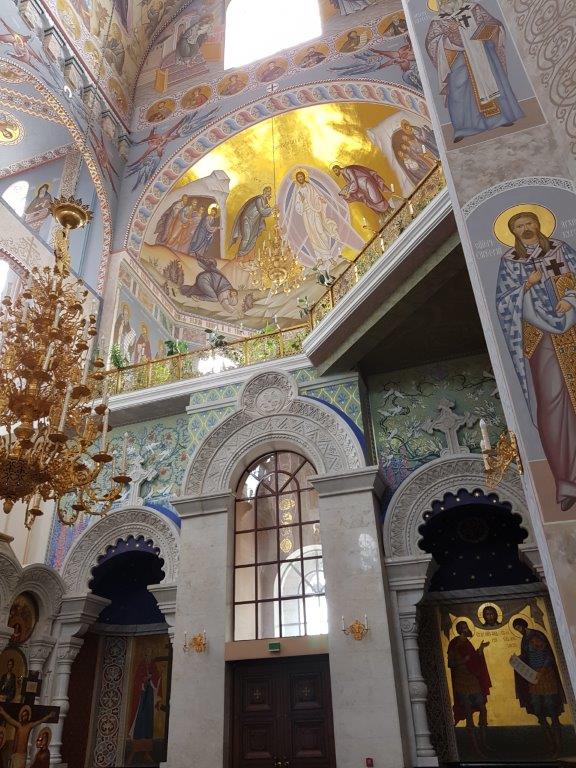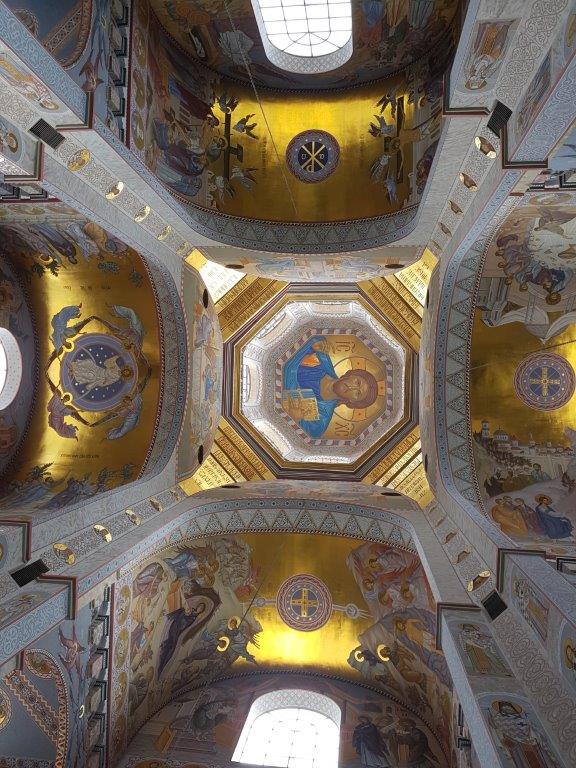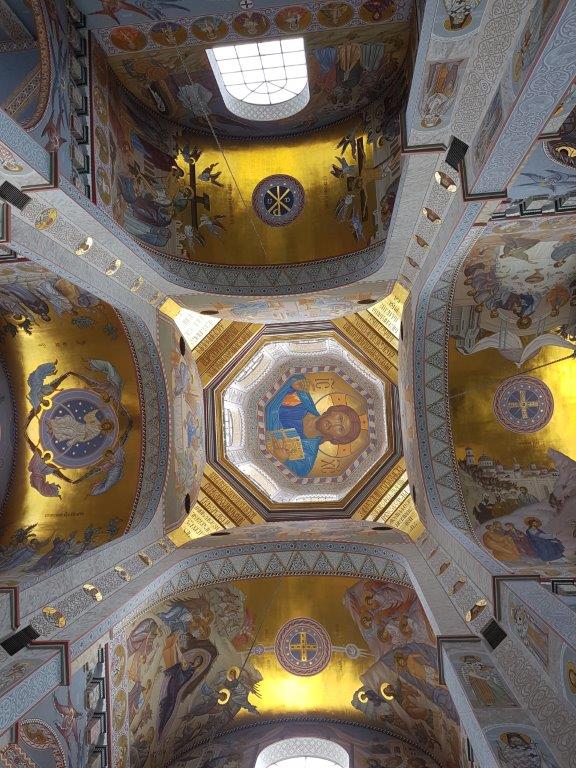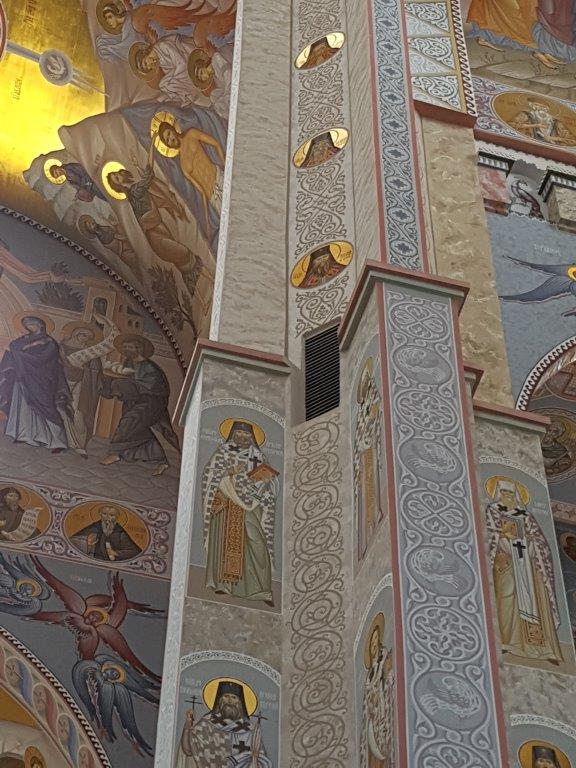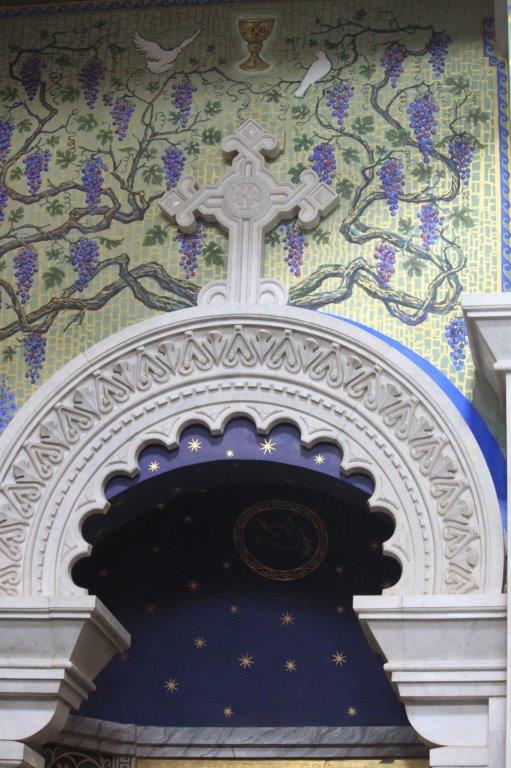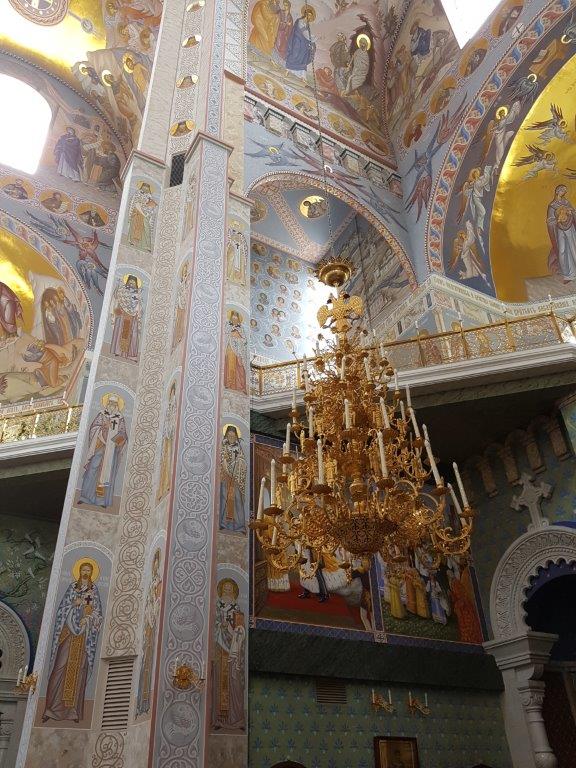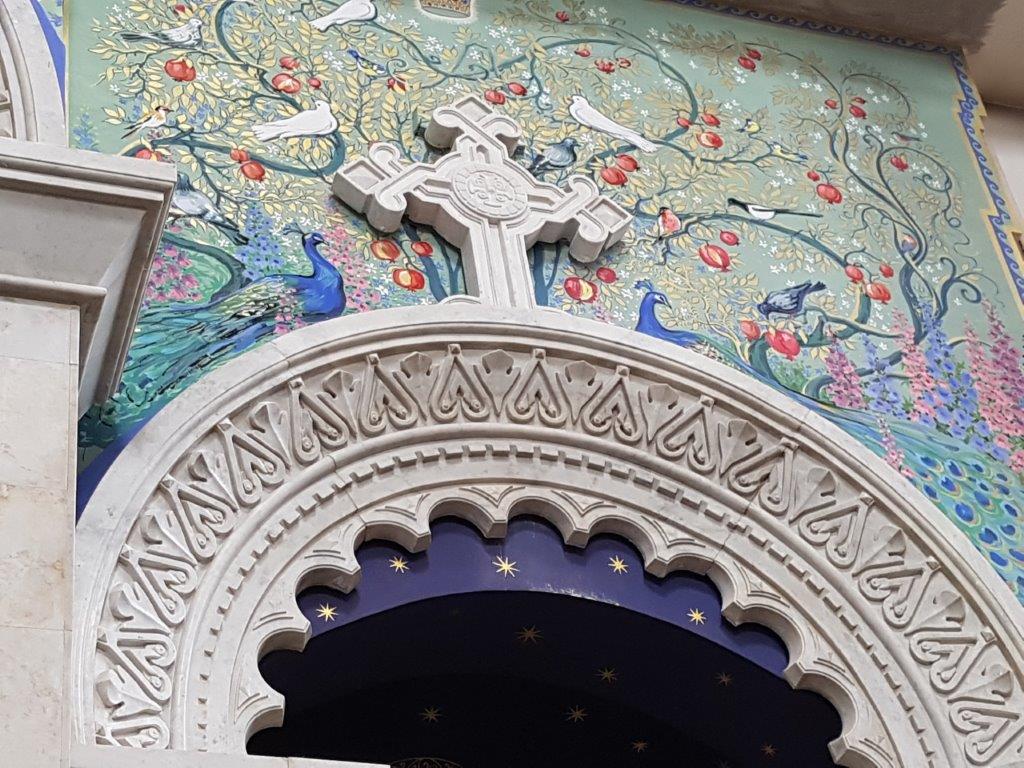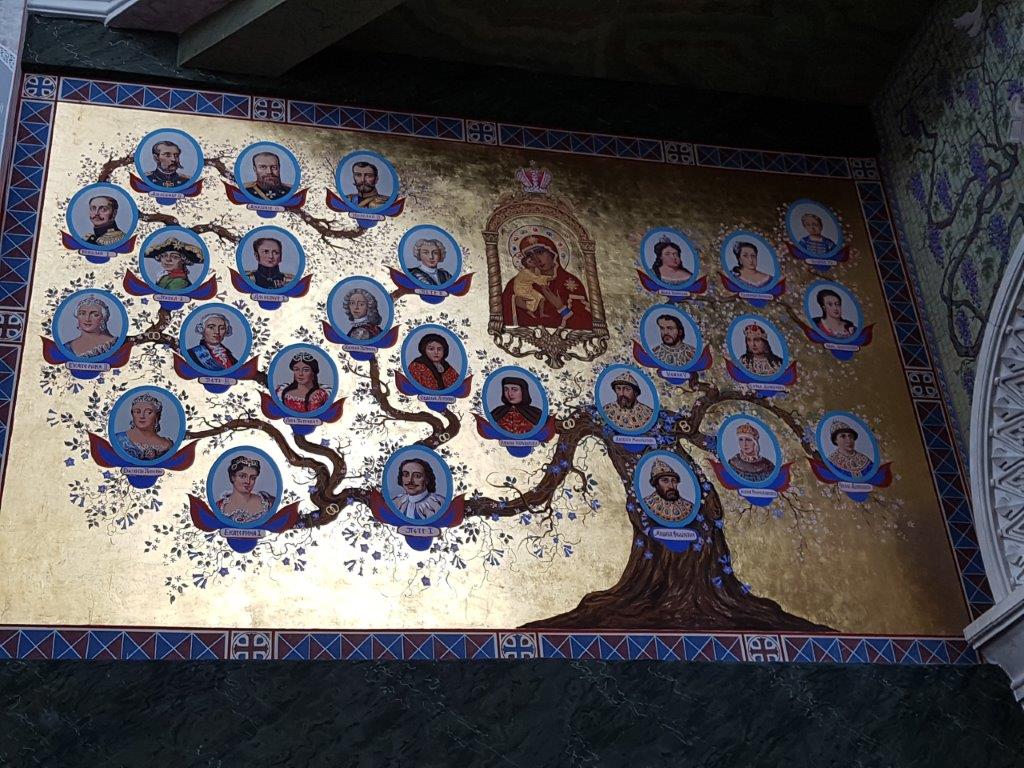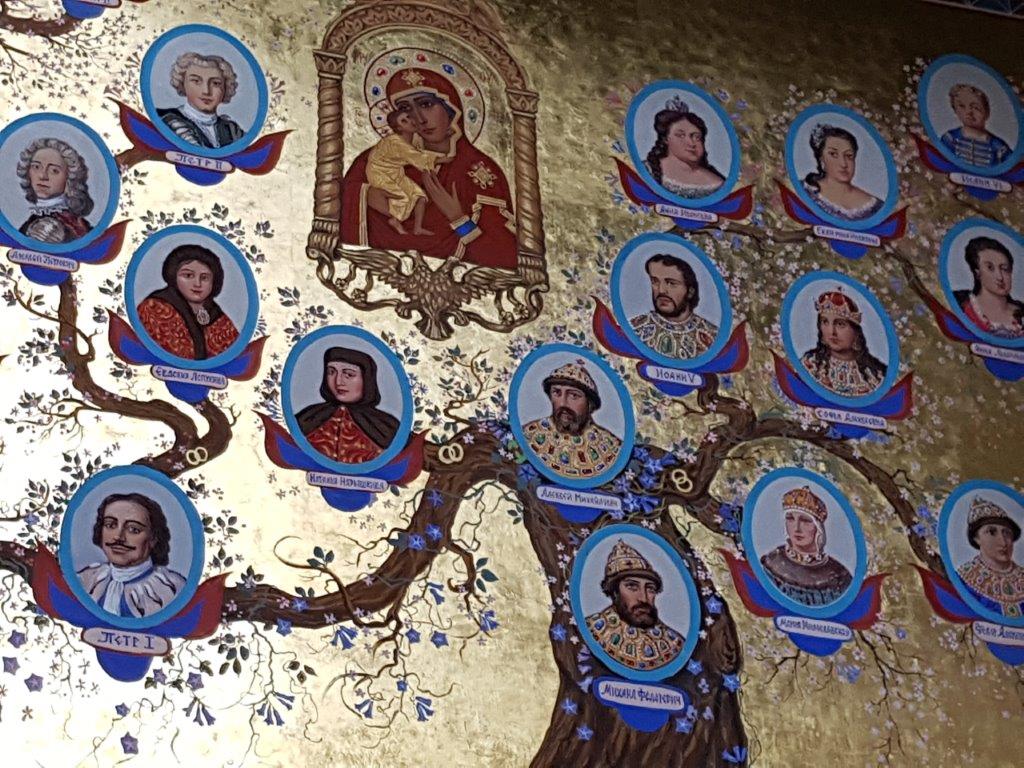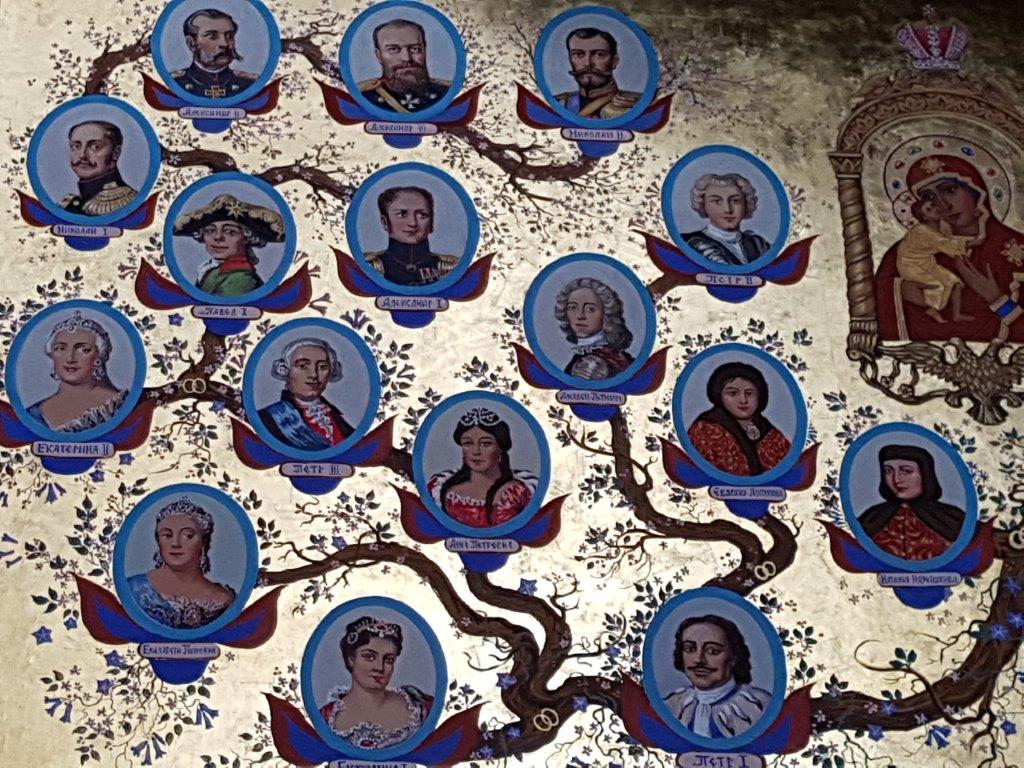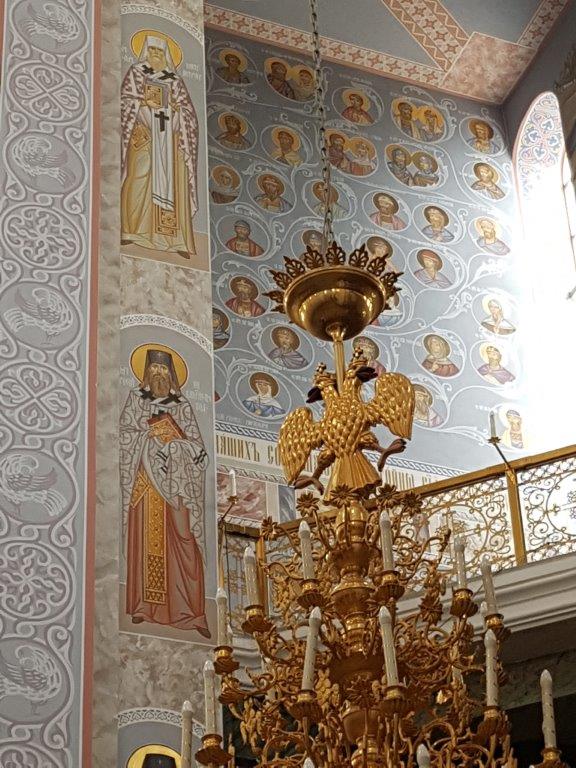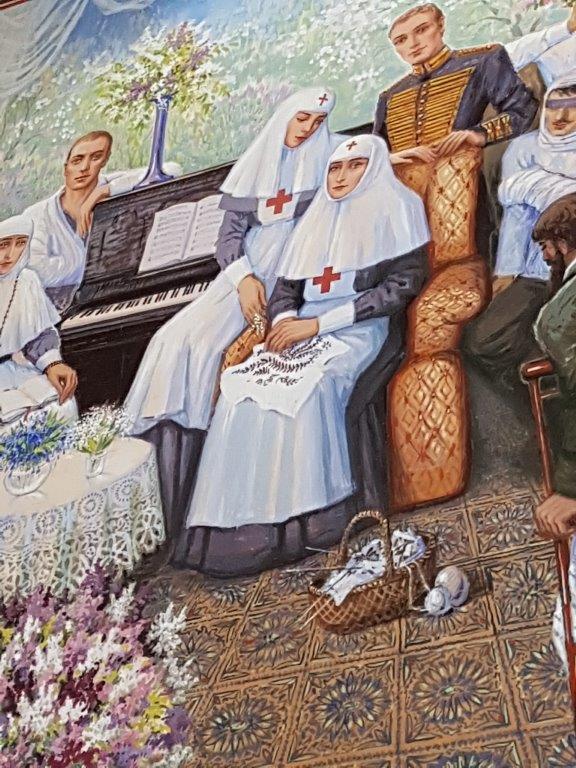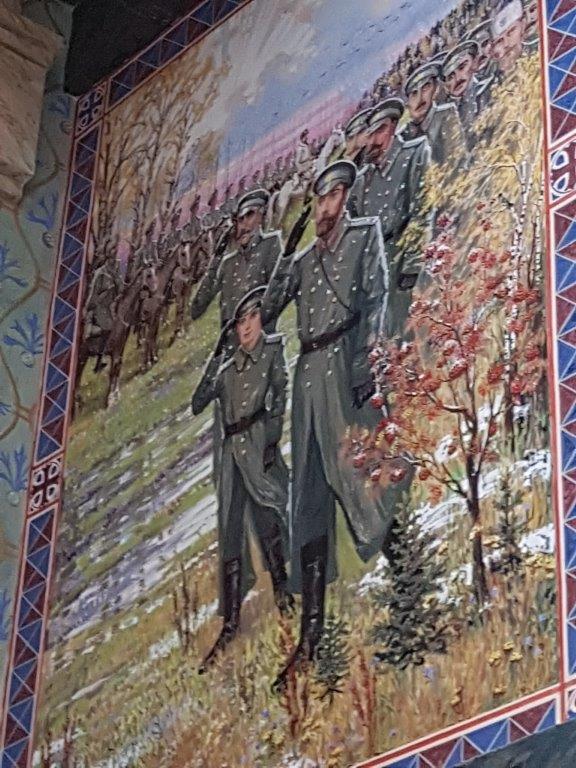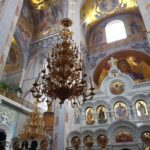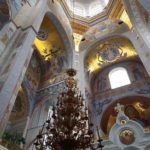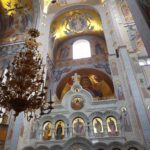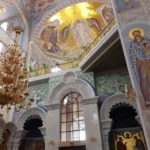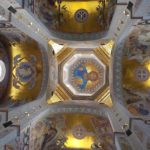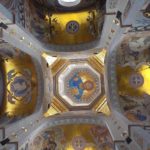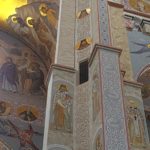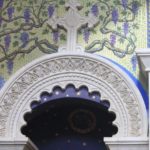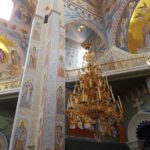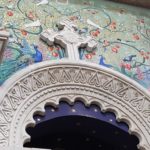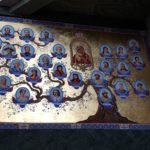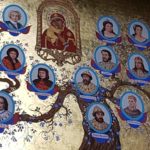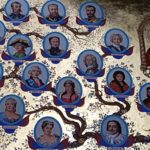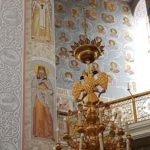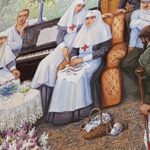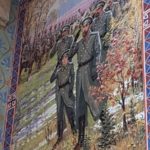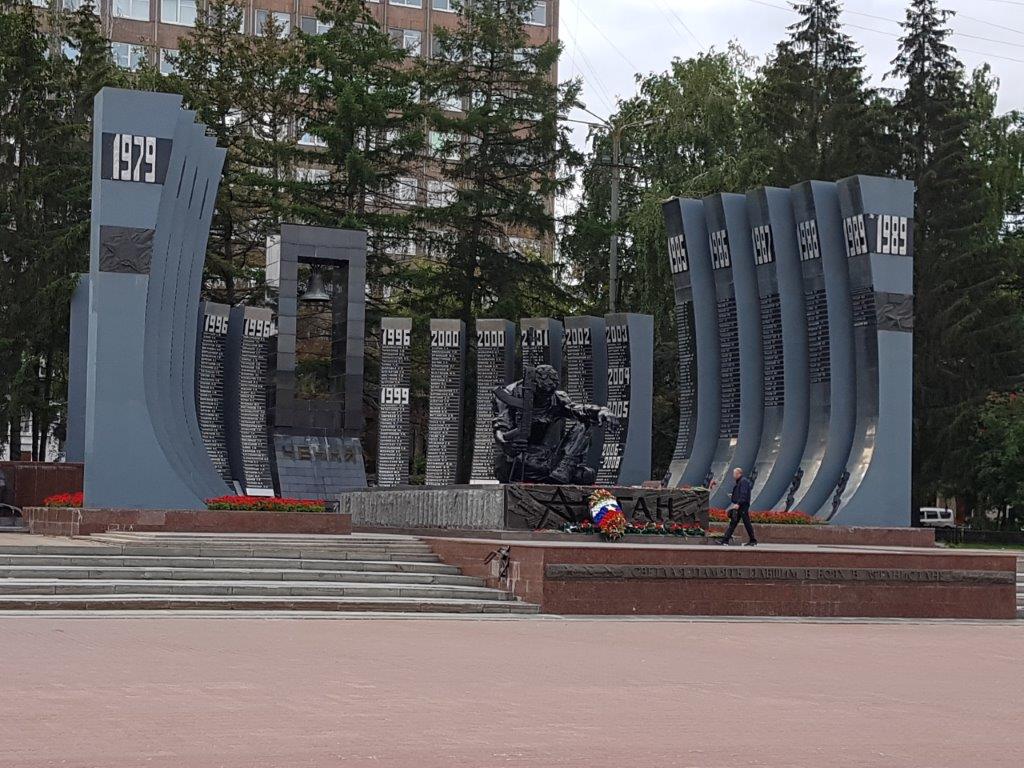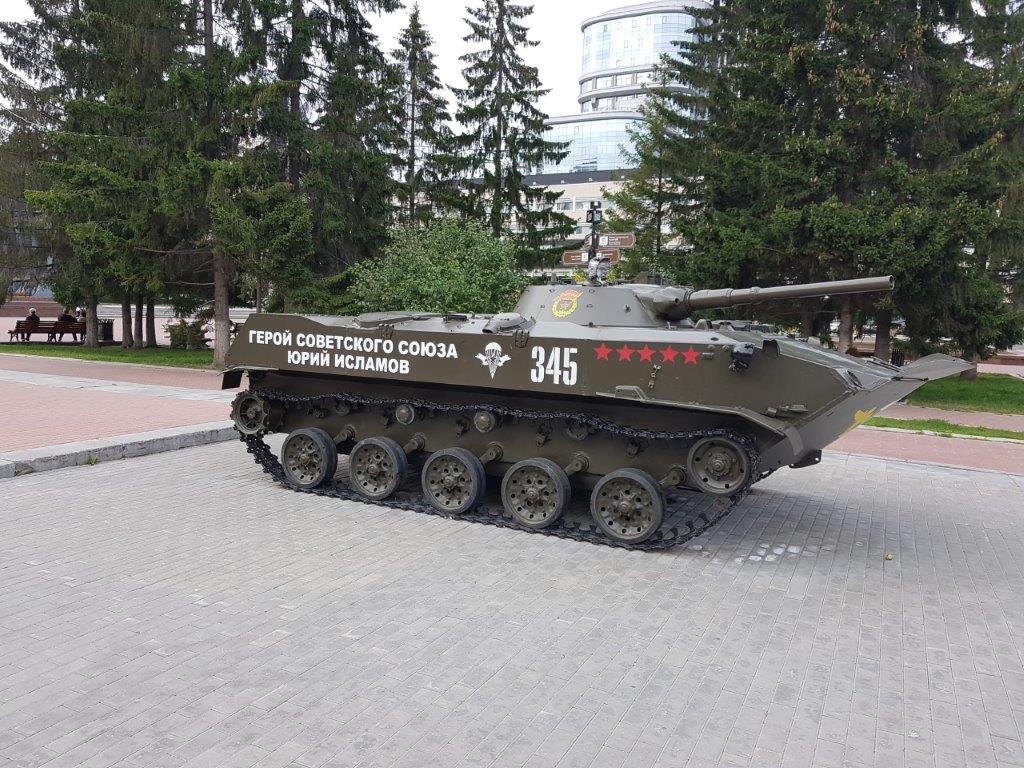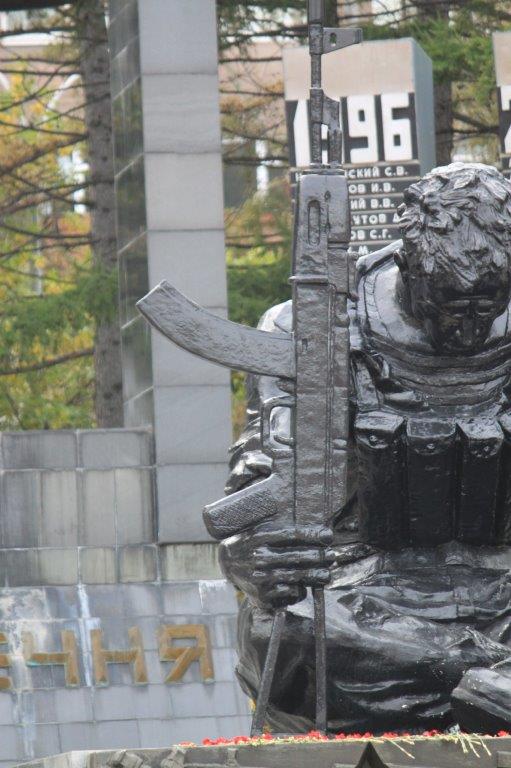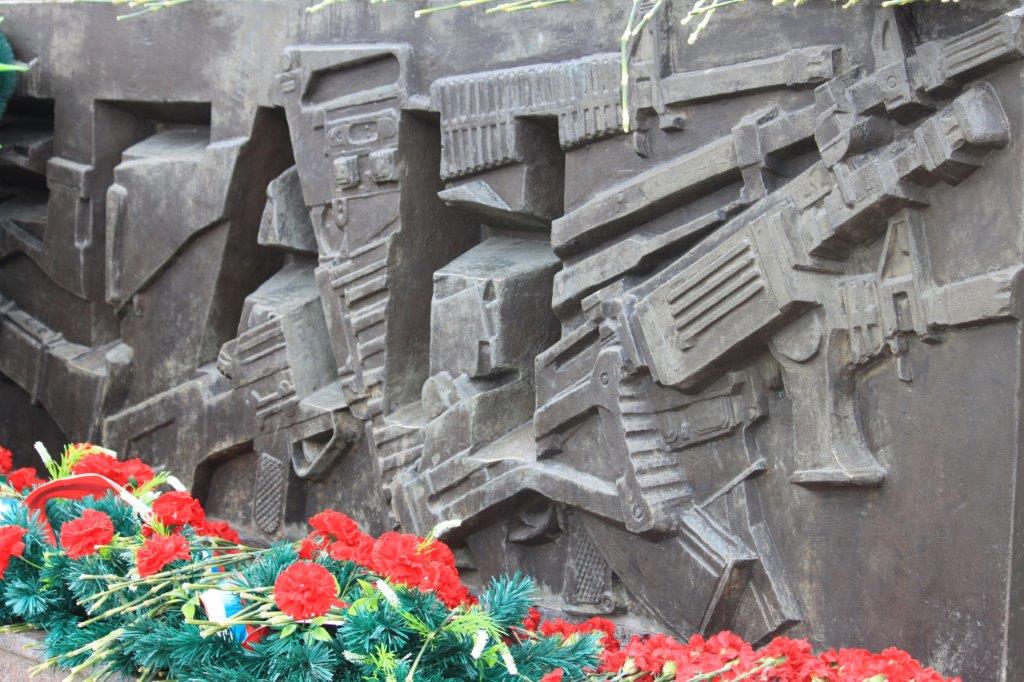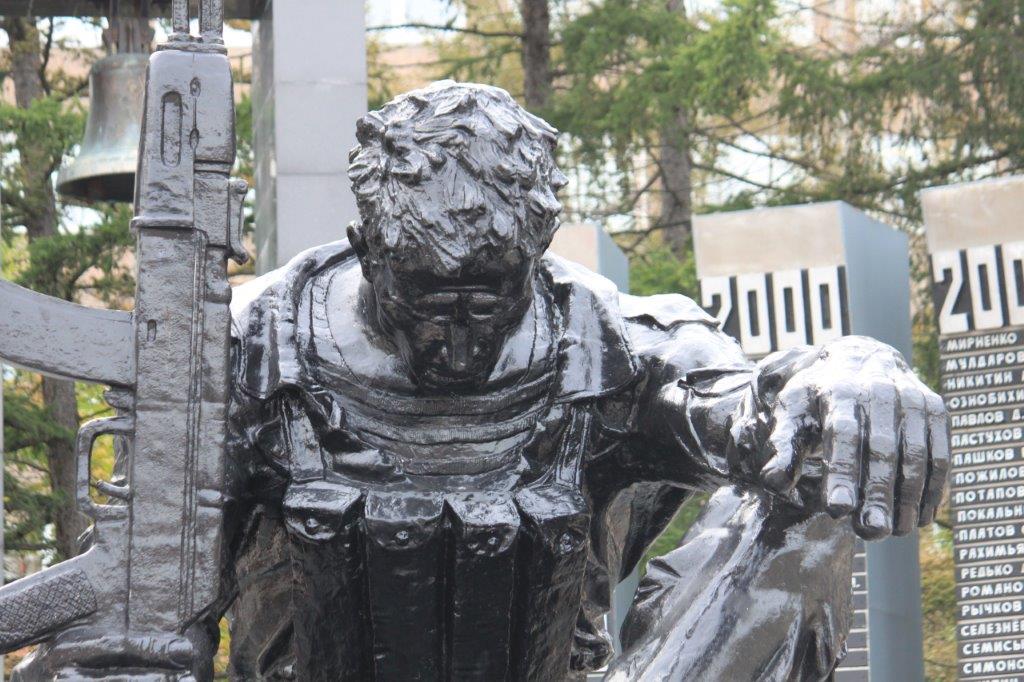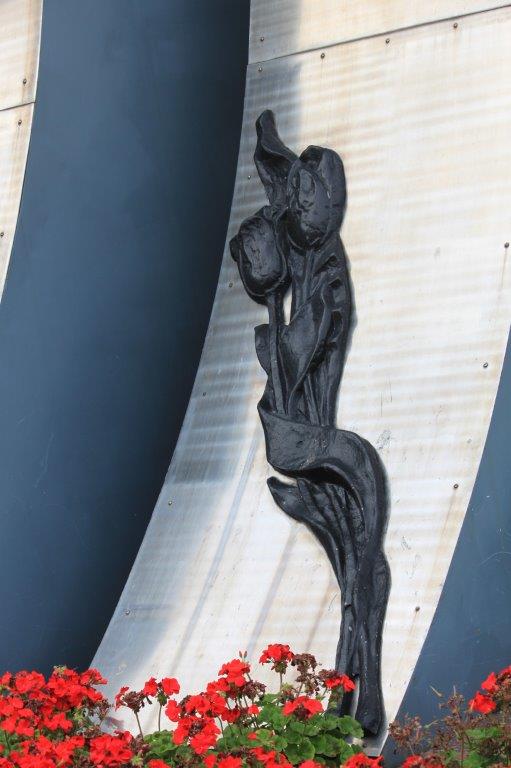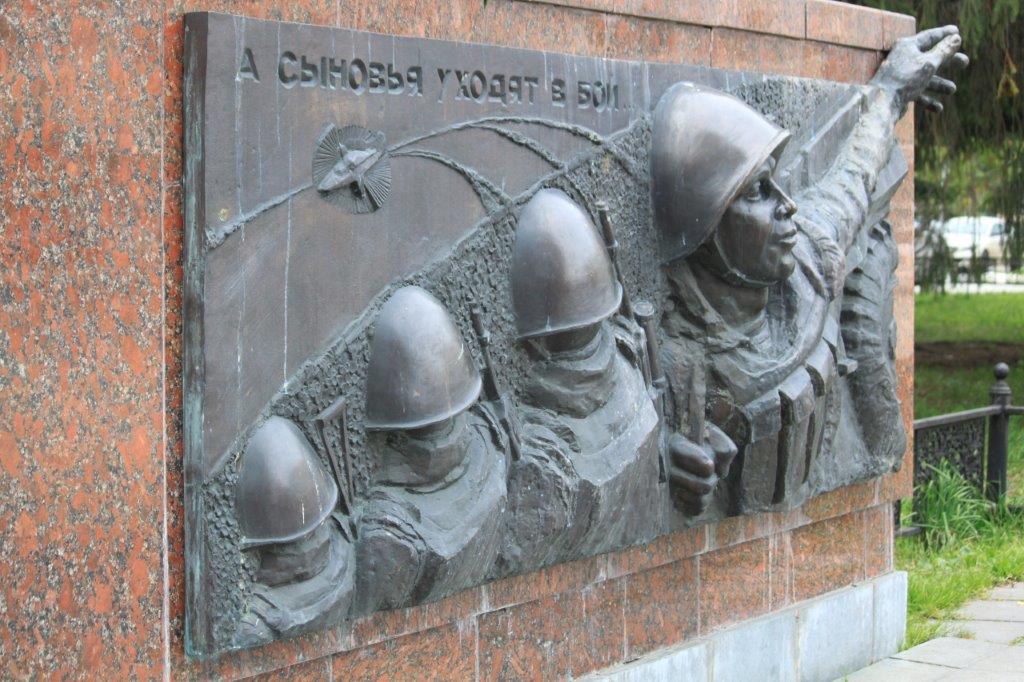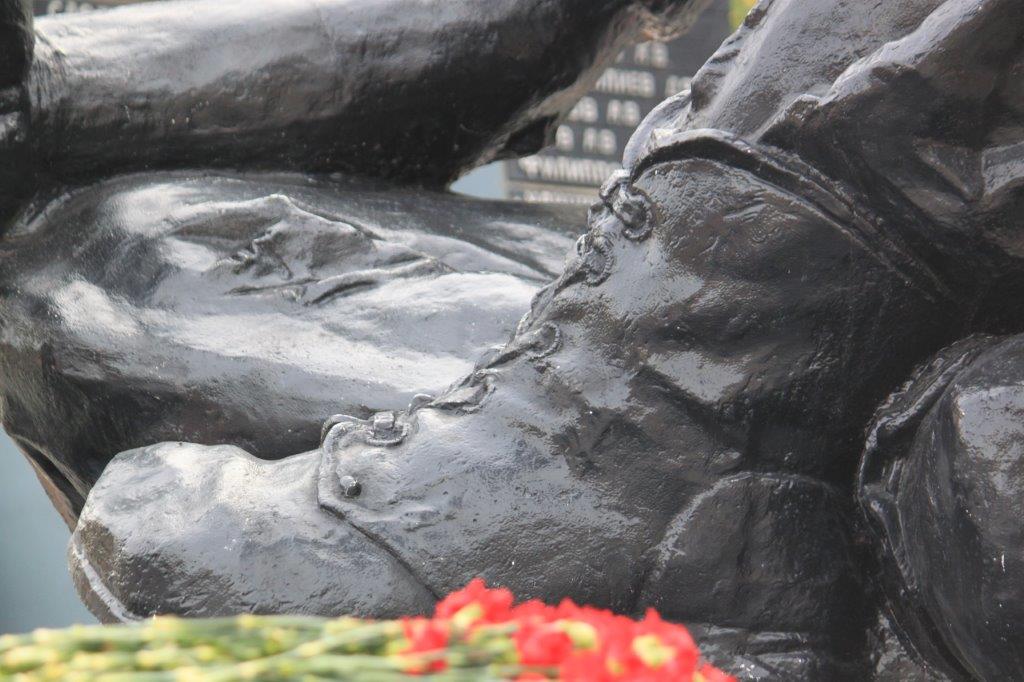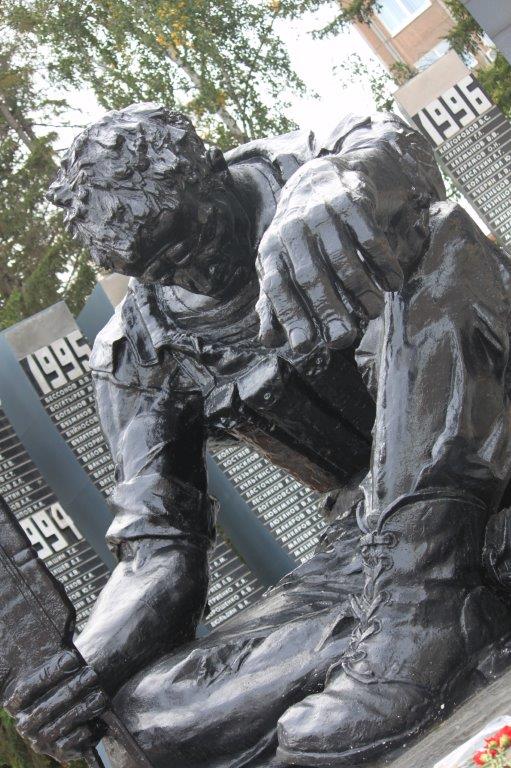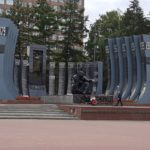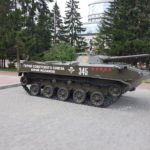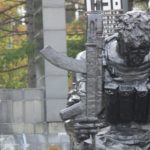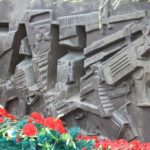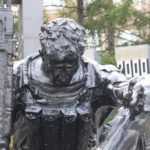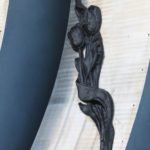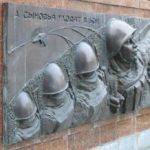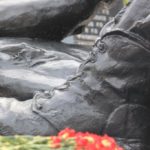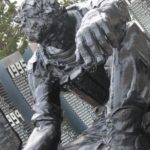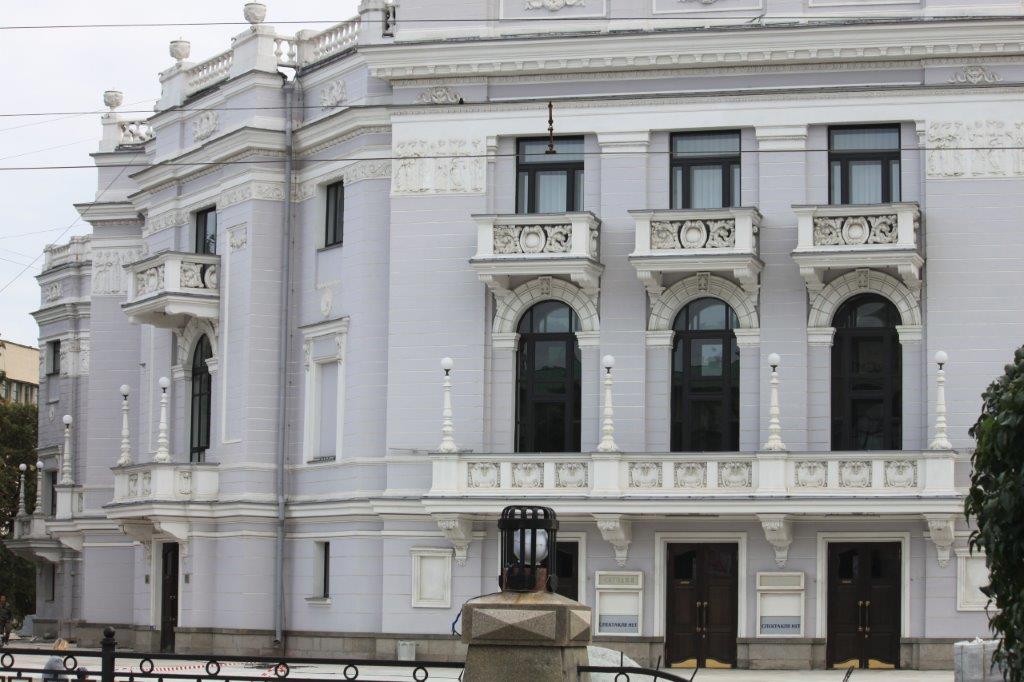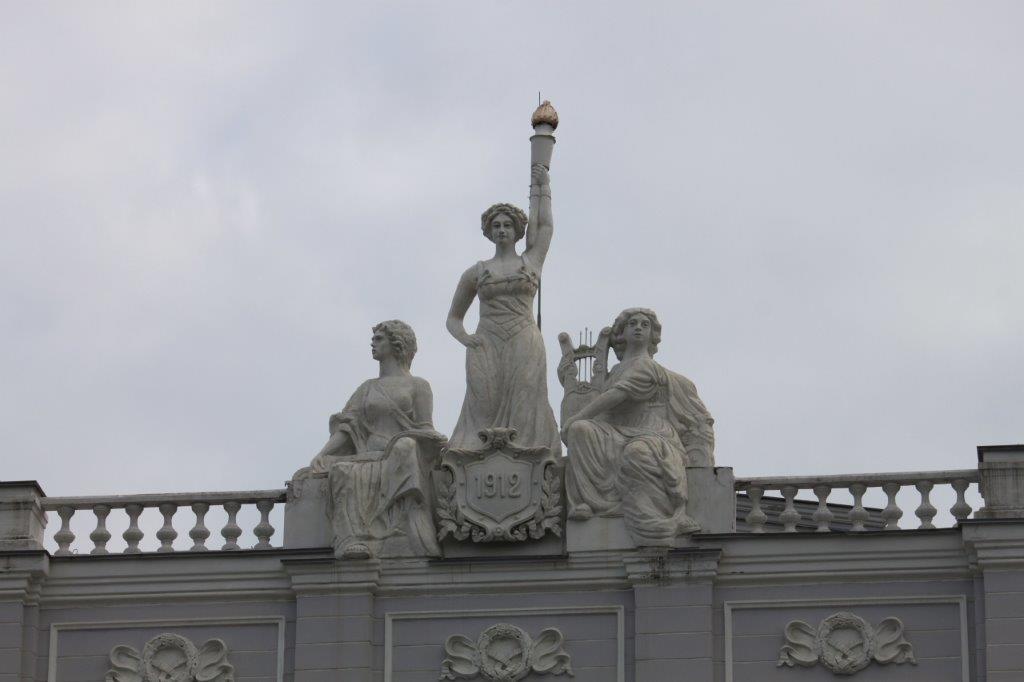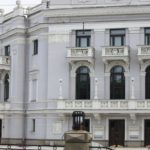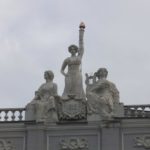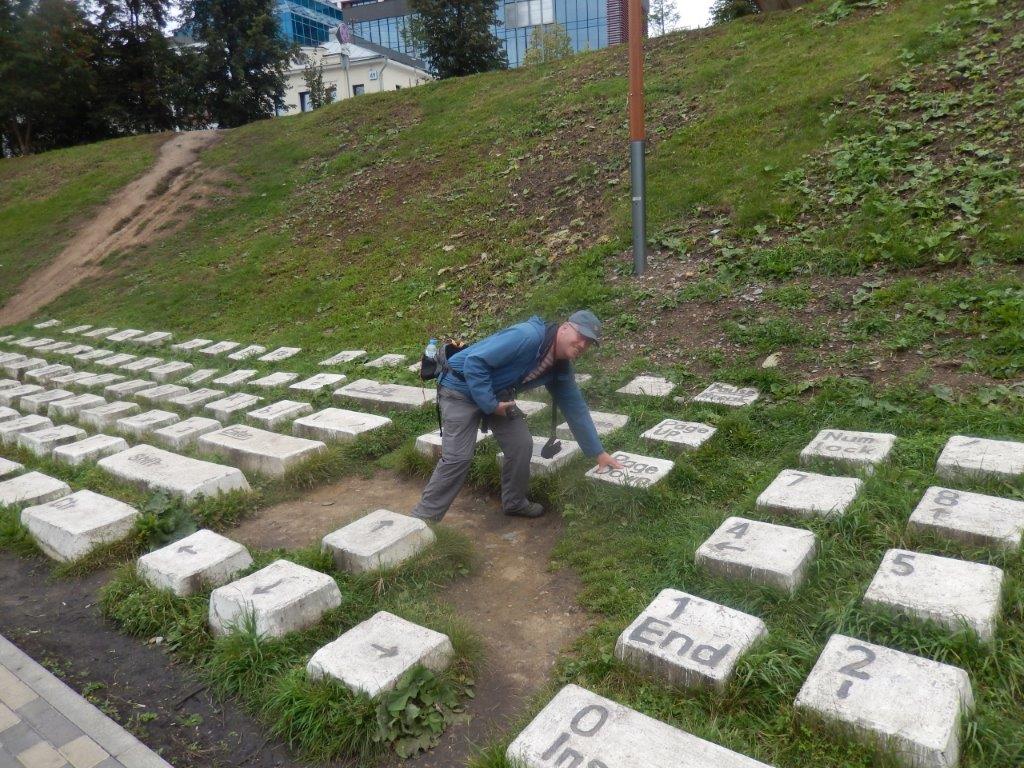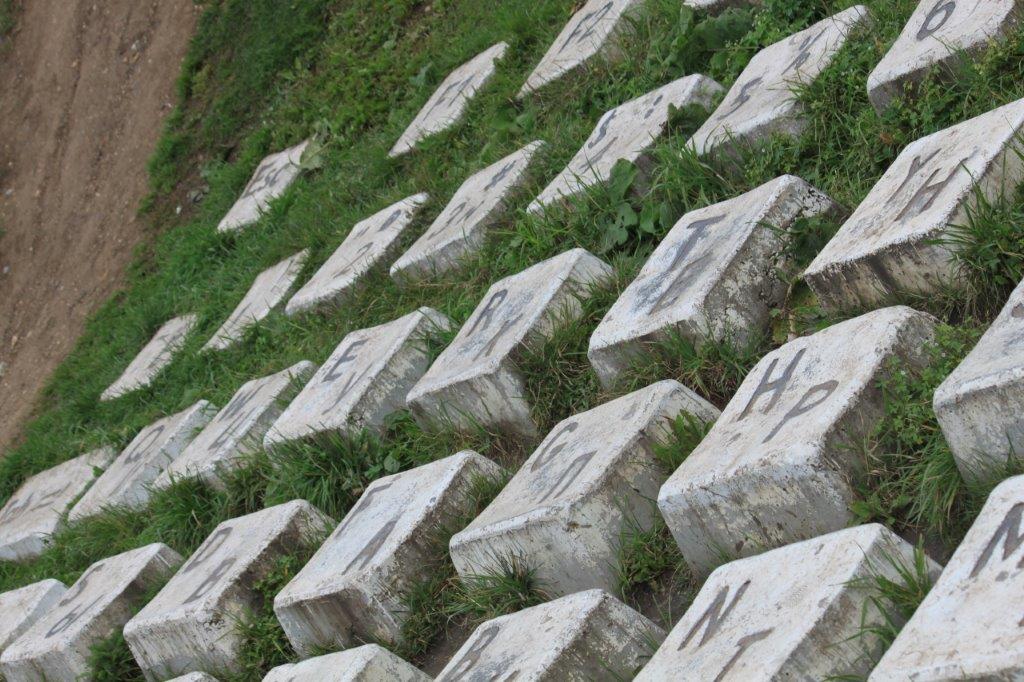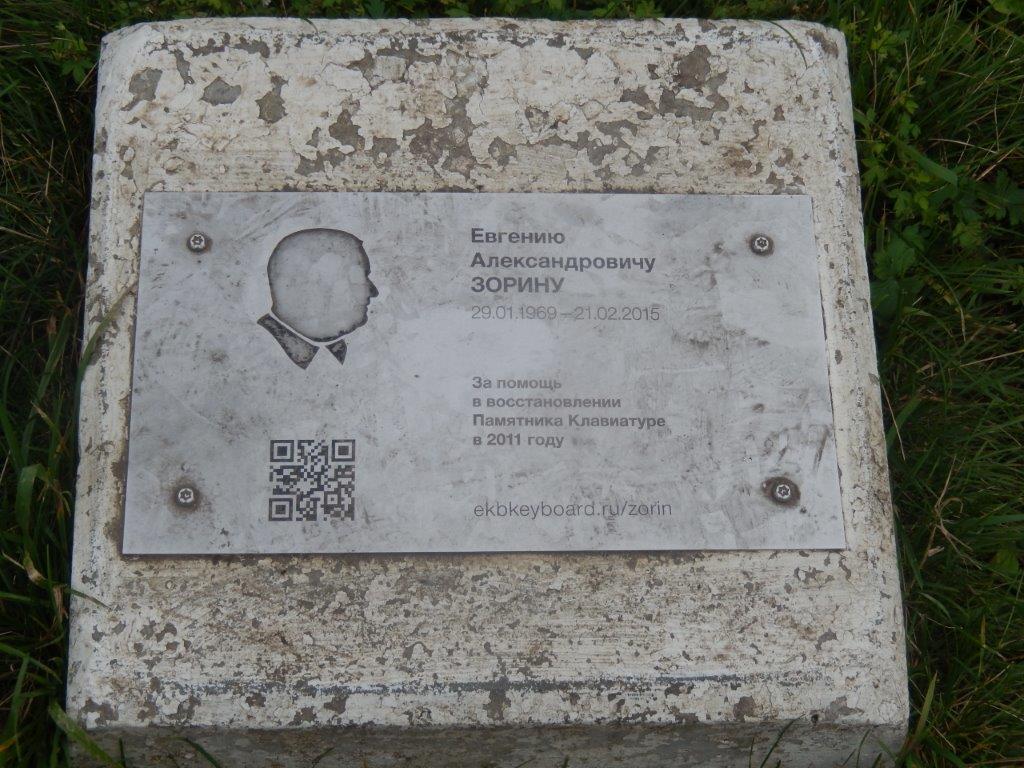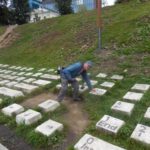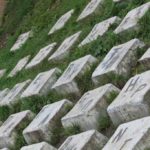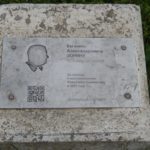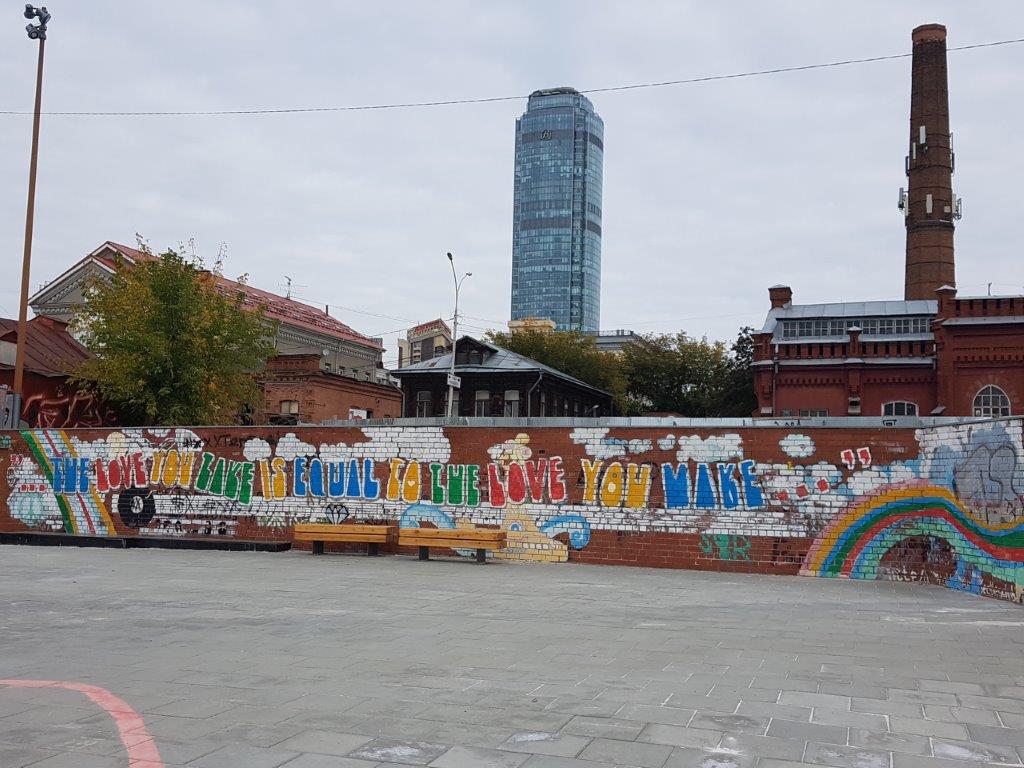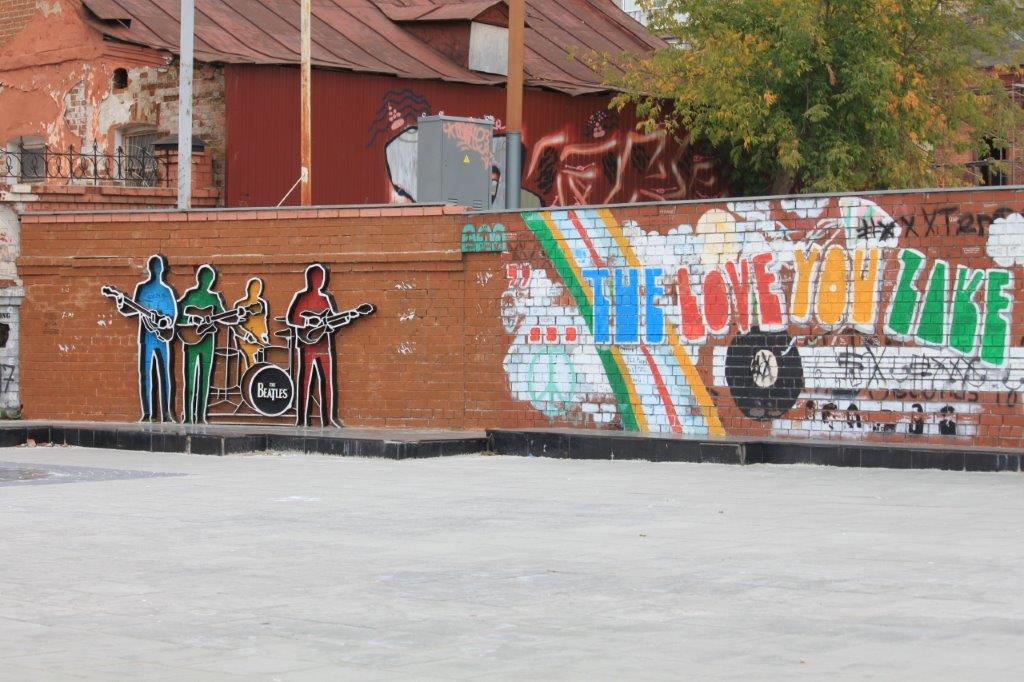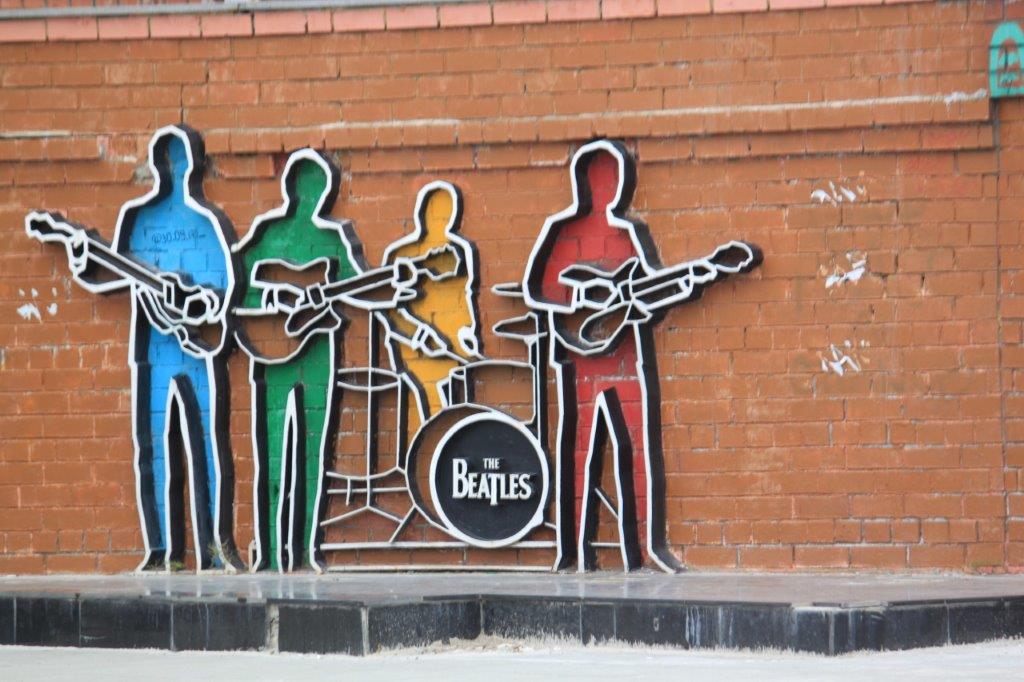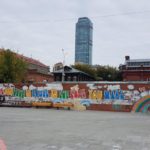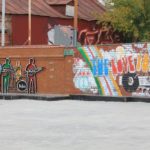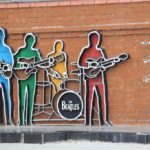Window to Siberia: Yekaterinburg/Jekaterinenburg: Capital of the Urals (citywalk)
Sverdlovsk…. That was the old Soviet name of Yekaterinburg. But before it was named Sverdlovsk it was named Yekaterinburg as well, meaning that like in Saint Petersburg (named Leningrad during the Soviet Union), the old historic names were revived after a dark period under the communist regime.
Yakov Sverdlov
The statue above can be found in the The Graveyard of Fallen Heroes in Moscow. In front of the Opera and Ballet Theater, in Yekaterinburg, is a statue for Yakov Sverdlov.
Yakov Mikhailovich Sverdlov (3 June 1885 – 16 March 1919), known by the pseudonyms “Andrei”, “Mikhalych”, “Max”, “Smirnov”, “Permyakov”, “Jacob”, was a Bolshevik party administrator and chairman of the All-Russian Central Executive Committee.
The post of chairman of the All-Russian Central Executive Committee was formally the highest state post in the RSFSR. Yakov took this position at the age of 32, which makes him the youngest non-monarchist head of the Russian state in history. He also lived the shortest life (33 years).
Although non of the sources that mention this are seen as conclusive evidence, it is stated that Sverdlov is the or one of the “communist party” officials that ordered the execution of the Tsar and his family. Sverdlov is also seen as the 1st Communist party leader (although the party was officially founded three years after his death).
Later the city became well known as the city where Boris Yeltsin, the first president of the new Russian Federation after the collapse of the Soviet Union, started his career.
Yekaterinburg
Yekaterinburg (Russian: Екатеринбу́рг), is the fourth-largest city in Russia and the administrative centre of Sverdlovsk Oblast, located on the Iset River east of the Ural Mountains, in the middle of the Eurasian continent, on the Asian side of the boundary between Asia and Europe. It is the main cultural and industrial centre of the oblast. In 2018, it had an estimated population of 1,501,652. Yekaterinburg has been dubbed the “third capital of Russia”, as it is ranked third by the size of economy, culture, transportation and tourism. It is located about 1,420 kilometres (880 mi) to the east of Moscow. Yekaterinburg was one of the host cities of the 2018 FIFA World Cup.
The region was settled and developed by Novgorodians by the 11th century. Yekaterinburg was founded on 18 November 1723 and named after the Russian emperor Peter the Great’s wife, who after his death became Catherine I, Yekaterina being the Russian form of her name. The city served as the mining capital of the Russian Empire as well as a strategic connection between Europe and Asia at the time. In 1781, Catherine the Great gave Yekaterinburg the status of a district town of Perm Province, and built the main road of the Empire, the Siberian Route, through the city. Yekaterinburg became a key city to Siberia, which had rich resources, and was known as the “window to Asia”, a reference to Saint Petersburg as a “window to Europe”. In the late 19th century, Yekaterinburg became one of the centres of revolutionary movements in the Urals. In 1924, after Russia became a socialist state, the city was named Sverdlovsk (Russian: Свердло́вск) after the Bolshevik leader Yakov Sverdlov. During the Soviet era, Sverdlovsk was turned into an industrial and administrative powerhouse. In 1991, after the fall of the Soviet Union, the city returned to its historical name.
Yekaterinburg is one of the most important economic centres in Russia, and the city had experienced economic and population growth recently. Some of the tallest buildings in Russia are located in the city.
City Walk
Red Line Ekaterinburg
 Some very creative minds live/lived in Yekaterinburg. They have some of the weirdest, most puzzling statues I ever saw (like e.g. the statue of the Invisible Man, a huge keyboard in a grass field and a time capsule buried in the earth) and to get there they created a city walk called the red line on a city map (not that strange huh) but it is a copy of the actual real life red line which is drawn on the pavements in the town! It is the easiest to follow city walk ever.
Some very creative minds live/lived in Yekaterinburg. They have some of the weirdest, most puzzling statues I ever saw (like e.g. the statue of the Invisible Man, a huge keyboard in a grass field and a time capsule buried in the earth) and to get there they created a city walk called the red line on a city map (not that strange huh) but it is a copy of the actual real life red line which is drawn on the pavements in the town! It is the easiest to follow city walk ever.
If there are numbers between brackets placed behind location titles, than those numbers correspond with the white numbers in red bullets seen on the map.
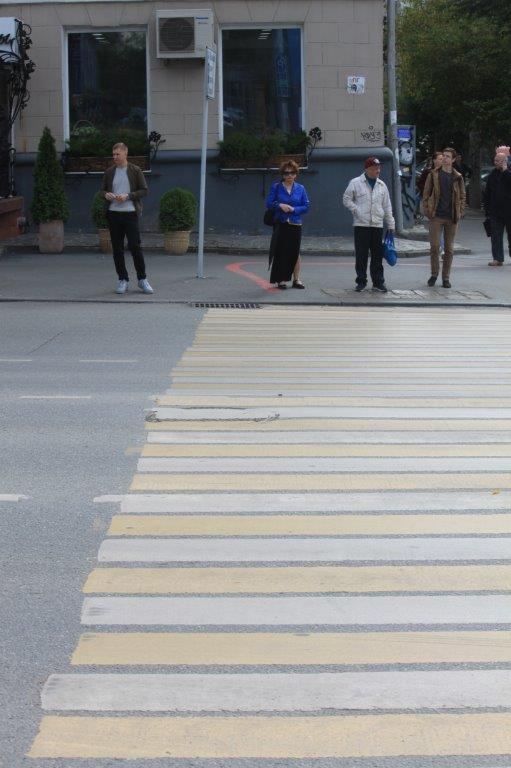
See the Yekaterinburg Red Line at the other side of the Street. It continuous on this side of the street (not in the picture)…
.Read more about this superbly helpful initiative at: ekbredline
Beneath are some images I made while walking the ekbredline and a few small detours. These are pics that give quite a good impression of the city
The Wandelgek started his visit in Yekaterinburg with a visit to the
Boris Yeltsin Presidential Center
This location is not on the ekbredline., but it’s worth to take a short detour.
Boris Yeltsin Presidential Center, also known simply as the Yeltsin Center is a social, cultural and educational center, which opened in Yekaterinburg in 2015. The architect of the project is Boris Bernaskoni, the founder of BERNASKONI interdisciplinary bureau that works on intersection of architecture, communication, art and industrial design.
One of the main objects of the center is Boris Yeltsin’s Museum, dedicated to the contemporary political history of Russia and its first president.
In the main hall at ground level the armored car used by Yeltsin when he was president was exhibited:
There has been public criticism towards the center where it was accused of distorting the historic truth of events.
The Wandelgek was impressed by its architecture. The interior and exterior were a unity. The elevator was very impressive.
Exterior
Interior
After leaving the Boris Yeltsin Presidential Center, The Wandelgek walked towards the dam in the river where Yekaterinburg was founded.
He passed the offices of
The City Hall/Administration (1)
Square 1905 (2)
1905 Square (Russian: Площадь 1905 годa/Plosjtsjad 1905 goda) also translated as the Square of 1905 is a square in Yekaterinburg, Russia. It is the oldest square in Yekaterinburg.
 The existence of the square goes back over 200 years. The centrepiece of the area is the Exaltation of God Cathedral, which at the time, had a bell tower which rose to a height of 88 metres, the highest point in the city. Other landmarks include a statue of Vladimir Lenin. During his tenure as First Secretary of the Sverdlovsk Communist Party, Boris Yeltsin worked on the square in one of the administrative buildings.
The existence of the square goes back over 200 years. The centrepiece of the area is the Exaltation of God Cathedral, which at the time, had a bell tower which rose to a height of 88 metres, the highest point in the city. Other landmarks include a statue of Vladimir Lenin. During his tenure as First Secretary of the Sverdlovsk Communist Party, Boris Yeltsin worked on the square in one of the administrative buildings.
The rest of the city walk was following the red line visible on this map, which was also drawn on the pavement of the real city.
Founding of Yekaterinburg (5)(6) &(7)
Russian historian Vasily Tatishchev and Russian engineer Georg Wilhelm de Gennin founded Yekaterinburg with the construction of a massive iron-making plant under the decree of Russian emperor Peter the Great in 1723.
So officially Yekaterinburg was founded on the 18th of November 1723, but already in the Spring of 1720, Tatishchev came to this location to start developing mining plants. There were already lots of mining plants in the Sverdlovsk region like e.g. the Uktussky plant.. You could actually say that half of the current cities that are located in the Sverdlovsk Oblast are there because they were in the vicinity of a mining plant
At first, Tatishchev was engaged at the Uktussky plant.He studied the area in which the plant was located but concluded that it was impossible to make the necessary reforms work. This led to the search for a new more suitable area to start building a new enterprise, and at the same time create an administrative center. A specific location on the banks of the river Iset was chosen, but a conflict arose with the major industrialists of those times – the Demidovs. They owned these lands. The result of this story was the denunciation, the court and the subsequent justification of Tatishchev..
Vasily Nikitich Tatishchev could now begin building the mining plant and also the administrative center needed to control the area for further industrial development, recruit and house employees and to create and develop a city (later in 1723) that would become the window for further exploration of Siberia.An important way to achieve this was by building a road, that would go through Yekaterinburg and further into Siberia and the far east. By this time, he was joined by V.I. de Gennin, a military officer and engineer who specialised in mining and metallurgy. Thanks to him, the city was named in honor of Catherine. The monument to the founders Tatishchev and de Gennin is located in the Historical Square, not far from Plotinka. It was opened for the 275th anniversary of the city.
The statue near the city dam where the city was founded, depicts both founders standing next to eachother carrying a 1st map of the city (or better the fortress) between them. In reality they had were not always of the same opinion and fought quite some conflicts. Also they were not of the same length as depicted in the statue. This was done to symbolize that they were equally important to the town.
They named the city after the emperor’s wife, Yekaterina, who later became empress regnant Catherine I. The official date of the city’s foundation is 18 November 1723, when the shops carried out a test run of the bloomery for trip hammers.
The Dam
The location where the fortress and the first buildings of the city and an iron plant were built was at a place in the local river where a dam was built. That dam is still there now.
Now Russia’s third metropolis, Yekaterinburg was a closed territory for several decades, before it opened up to foreigners, travellers and tourists.
капсула времени / Time capsule

In the 70’s, a time capsule was buried here for future generations, and it will be opened on the day of the 300th anniversary of the metropolis, which is in 2023.
Stone of Love Monument
Pink rhodonite is a mineral which is mined in Russia in the Urals near Yekaterinburg. The pink color caused citizens to start calling it ” stone of love” . It is a mix of Manganese, Iron, calcium and magnesium silicate. It is located at the beginning of the dam, where the water is discharged in the historic square.
The Iron Plant
The plant was commissioned on 24 November 6 days later, with its size and technical equipment exceeding all metallurgical enterprises not only in the country, but also in the world. It was granted town status in 1796.
The city was one of Russia’s first industrial cities, prompted at the start of the 18th century by decrees from the Tsar requiring the development in Yekaterinburg of metalworking industries. The city was built, with extensive use of iron, to a regular square plan with iron works and residential buildings at the centre. These were surrounded by fortified walls, so that Yekaterinburg was at the same time both a manufacturing centre and a fortress at the frontier between Europe and Asia.
It therefore found itself at the heart of Russia’s strategy for further development of the entire Ural region. The so-called Siberian Route became operational in 1763 and placed the city on an increasingly important transit route, which led to its development as a focus of trade and commerce between east and west, and gave rise to the description of the city as the “window to Asia”. The map below shows the first growth of the town.
With the growth in trade and the city’s administrative importance, the ironworks became less critical, and the more important buildings were increasingly built using expensive stone. Small manufacturing and trading businesses proliferated. In 1781 Russia’s empress, Catherine the Great, nominated the city as the administrative centre for the wider region.
Chapel of Saint Yekaterina (8)
Sevastyanovs House or House of the Trade Unions (8)
The Wandelgek walked past the large city pond following the red line drawn on the pavement towards the former location of the
The Ipatiev House (16)
The Ipatiev House, built in the 1880s, was a spacious and modern residence owned by Nicholas Ipatiev. The Ural Soviet gave him two days’ notice to leave. Once the building was vacated, the Soviet built high wooden walls around the house. First to arrive among the Romanovs were Nicholas, Alexandra Feodorovna and their daughter Maria. Later, they would be joined by Olga, Tatiana, Anastasia and Alexei. The Romanovs would be held prisoner in their final residence for 78 days. In 1974, the mansion was designated a “national monument”; but three years later on September 22, 1977, a team, under orders from the Soviet government and with the direction of Boris Yeltsin, demolished the house.

Following the October Revolution, the family of deposed Tsar Nicholas II was sent to internal exile in Yekaterinburg where they were imprisoned in the Ipatiev House in the city.
Romanov execution
After the February Revolution, the former Tsar and his family were taken captive and held as prisoners during the Russian Civil War. Tsar Nicholas and his family were at first kept at the Alexander Palace at Tsarskoe Selo outside St. Petersburg. Alexander Kerensky, leader of the provisional government moved them to the former Governor’s mansion in Tobolsk. Later they were transferred to the Ipatiev House in Yekaterinburg.
With the advance of the Czechoslovak Legion (fighting with the White Army against Bolsheviks) towards Yekaterinburg, fears of a potential attempt to liberate them grew, and the local Bolshevik leaders, after consulting with the leadership in Moscow, decided to kill the family.
In July 1918, the Czechoslovak Legions were closing on Yekaterinburg. In the early hours of the morning of 17 July, the deposed Tsar, his wife Alexandra, and their children Grand Duchesses Olga, Tatiana, Maria, Anastasia, and Tsarevich Alexei were executed by the Bolsheviks at the Ipatiev House.
In the early hours of July 17, 1918, the Tsar Nicholas Alexandrovich, Tsarina Alexandra Feodorovna, Grand Duchess Olga, Grand Duchess Tatiana, Grand Duchess Maria, Grand Duchess Anastasia and Tsarevich Alexei—were taken to the basement of the Ipatiev House and were murdered by being shot and bayoneted, to avoid them being recaptured by the anti-Bolshevik forces. Czechoslovak Legions captured the city less than a week later.
Events:
The Tsar and his family were woken in the middle of the night. They were told that photographs were immediately needed for propaganda purposes and a photographer had arrived to make photo’s in the basement. The Tsar asked why this had to be done in the middle of the night but it was explained to him that this was important.
After the Tsar and his direct family members were seated, the servants were asked to leave the room, but they didn’t trust the situation and decided to stay with the family they served. Yurovsky started to read a Death sentence for crimes commited against the Russian people. The Tsar, puzzled, surprised and wanting to protect his family rose from his chair and walked towards Yurovsky and began to say: “What?”, but Yurovsky immediately. shot him down with his revolver and subsequently gave the other soldiers in the room started firing their revolvers too. No family members or servants survived the massacre. The remnants were brought to the woods surrounding Yekaterinburg and were put in a shallow grave. In 1998 these remnants were transported to Saint Petersburg for reburial.
Other members of the Romanov family were killed at Alapayevsk later the same day. The Legions arrived less than a week later and captured the city. The city remained under the control of the White movement in which a provisional government was established. The Red Army took back the city and restored Soviet authority on 14 July 1919.
A small museum with pics and models can be found in the basement of the Church on the blood.
A story is told that the Soviet Leadership in Moscow wanted the house where the Tsar and his family were killed, destroyed, to prevent it from becoming a martyr shrine. But Boris Yeltsin, then mayor of Yekaterinburrg, ordered differently. He ordered the house to be destroyed but specificly told the demolition supervisor to spare the basement where the gruesome murders were executed. This lead to the basement not being destroyed. It also boosted Yeltsin’s popularity. It is not clear whether this is one of the earlier mentioned distortions of historic thruth or whether this really presents the historic events.
 Another story being told is that after the Tsar was killed, The orthodox church declared the Tsarist family members Saints. But church refused to declare the servants that stayed with the family to be Saints as well. This led to large protest among Russians who felt that the servants should be entitled to become Saints as well. Eventually the Orthodox church complied and the servants were declared Saints too.
Another story being told is that after the Tsar was killed, The orthodox church declared the Tsarist family members Saints. But church refused to declare the servants that stayed with the family to be Saints as well. This led to large protest among Russians who felt that the servants should be entitled to become Saints as well. Eventually the Orthodox church complied and the servants were declared Saints too.
The church on Blood (16)
The Church on Blood in Honour of All Saints Resplendent in the Russian Land is a Russian Orthodox church built on the site of the Ipatiev House in Yekaterinburg, where Nicholas II, the last Emperor of Russia, and his family, along with members of the household, were shot and killed by the Bolsheviks during the Russian Civil War. The church commemorates the Romanov sainthood.
The Church on Blood itself had a beautiful typical Russian Orthodox Christian
Exterior
On September 20 1990, the Sverdlovsk Soviet handed the plot to the Russian Orthodox Church for construction of a memorial chapel. After the former Tsar and his family’s canonisation as Passion Bearers, the Church planned to build an impressive memorial complex dedicated to the Romanov family. A state commission was gathered and architectural as well as funding plans were developed. Construction began in 2000.
The completed complex comprises two churches, a belfry, a patriarchal annex, and a museum dedicated to the former imperial family; the altar of the main church is directly over the site of the Romanovs’ execution. The complex covers a total of 29,700 square feet (2,760 m2).
On June 16 2003, 85 years after the execution of the former imperial family, the main church was consecrated by Metropolitan bishop Yuvenaly, delegated by Patriarch Alexy II who was too ill at the time to travel to Yekaterinburg, assisted by Russian Orthodox clergy from all over the Russian Federation. In 2003, President Vladimir Putin and German Chancellor Gerhard Schröder met in Yekaterinburg and visited the church.
Russian churches and cathedrals are often abundantly decorated,in abundance more comparzble with Roman Cathic churches (specially in middle and southern Europe) then with protestant churches that look much more sober. In style Russian Orthodox churches are quite different though. They are topped by onion shaped domes and the interior is often completed with an iconostase.
The Cross
On one side of the church, there is an orthodox cross which marks the location of the Romanovs’ deaths. Even during the Soviet Era, there were crosses in that area but it changed over time. Different crosses replaced by a new one as the years went by. A small wooden structure was eventually built behind the cross and still stand near the church today, it can be shown in the picture on the right.
Outside the church are many large photographs of the Tasar and his family members…
After entering the
Interior
was very impressive as well.
The Imperial Room
The altar of the Imperial Room is located in the lower church sanctified in honor of the Holy Royal Martyrs. It was established on the site of the room located in the basement of the Ipatiev House, where Emperor Nicholas II, his family, and four retainers were all brutally murdered on the night of 16/17 July 1918.
The central place is taken by a unique mosaic panel, depicting the Holy Royal Martyrs and their loyal subjects: Emperor Nicholas Alexandrovich, the Empress Alexandra Feodorovna, Tsesarevich Alexei, Grand Duchesses Olga, Tatiana, Maria, Anastasia, St. Eugene Botkin, Alexei Trupp, Ivan Kharitonov and Anna Demidova.
The highest part of the church was very impressive. Mosaics and icons everywhere. In a special room in the back of the church were large mosaic family trees and one of those was that of Tsar Nicholas II…
The Wandelgek decided to leave the red line and visit the war memorial statue of the
Black Tulip
instead.
This location is not on the ekbredline., but it’s worth to take a short detour.
This monument was erected to honor soldiers who died in battle in countries like Tajikistan, Afghanistan and during local conflicts in neighboring countries, like e.g. the Chechen war.
The memorial symbolizes the iinterior cargo area of a miltary aircraft and in its center is a soldier, mourning the many dead Russian soldiers on the battlefields. In those days the returning aircraft carrying sometimes up to 200 bodies, were called black tulips. The names of dead soldiers are engraved on the inside of the structure of the aircraft.
Near the black tulip statue was a buildimg in front of which a missile launcher and a tank were posted.
Next, following the red line again, The Wandelgek got to the Yekaterinburg
Opera and Ballet Theatre (23)
In front of the theater is a statue of Yakov Sverdlov (not on any pic though).
 Key board Monument (30)
Key board Monument (30)
Keyboard Monument (Russian: Памятник клавиатуре) is an outdoor sculpture featuring the QWERTY/JCUKEN keyboard. It is located in the Russian city of Yekaterinburg alternatively spelt Ekaterinburg and is popular among tourists.
History
It was created by Anatoly Vyatkin and installed on October 5, 2005 on the embankment of the Iset River in the city centre.
The landmark depicts an IBM PC compatible Cyrillic computer keyboard at 30:1 scale (the area covered by the monument is 16 × 4 m), with 104 concrete keys. Each regular key weighs 180 pounds, while the space bar alone weighs 1,000 pounds.
The keyboard attracts many visitors to the city and is today considered one of its top sights. It is also referred to as “one of the miracles of Russia” by some researchers. Niklaus Wirth, Pascal programming language designer, evaluated the object while it was being constructed and found it to be fascinating.
Keys F1, F2, F3, and Y were once stolen and in 2011 were rebuilt.
In 2019 a survey by national search engine Yandex found that Keyboard Monument was the 2nd most searched monument among all of Russia’s numerous famous monuments. The 1st position was held by Bronze Horseman the 3rd Monument to Minin and Pozharsky.
In May 2019 it became known that the monument is facing threat of demolition. The nearby stairway was destroyed
.
Beatles Monument (31)
I’m back in the USSR
You don’t know how lucky you are, boy
In Yekaterinburg the very 1st monument for The Beatles was erected, near the Iset river bank. It represents the silhouettes of John, Paul, George and Ringo above the band name. The accompanying text
The love you take is equal to the love you make
is from the song The End which can be heard on their last album, Abbey Road (yes I know Let it be was published later but that was because it got shelved due to internal creative conflicts, but most songs on Abbey road were created later than those on Let it be).
It was late afternoon and The Wandelgek ended his city walk through mysterious Yekaterinburg. He needed to find a shop to buy some much needed groceries because now the charzcter of his travels on the Trans Siberia Express was drastically changing. He still was in a large city but now the journey entered the wilds of Siberia and after that those of Mongolia and this meant 2 important things were going to change:
- He would start this evening on a full 3 day stretch of the train journey, not interupted with stays in towns en route. It was the longest stretch of continuous train journey that was planned for these travels and it would bring him deep into the heart of wild Siberia. For this he needed to replenish his stock of noodle packages and some salty chips and vodka were needed to make the journey enjoyable.
- The character of the journey up till now had been that of a city trip by train, which is logical because the cities are European Russias (and Yekaterinburg is still very much European like, even when located in Asia) most interesting spots because of all the history and cultural wealth that is collected within their boundaries, but now the journey went deep into wild Siberia and Mongolia and this made it even more interesting for The Wandelgek, because now he could start thinking about the locations where he wanted to do some nature walks! The relatively unknown eastern parts of Russia and the grass plains and desert of Mongolia were beckoning 🙂
When evening started to fall it was time for dinner and a drink

